The kitchen island serves as the heart of modern home design, functioning as both a practical workspace and a stunning focal point that draws family and friends together. Creating the perfect kitchen island centerpiece transforms this essential surface into a captivating display that reflects your personal style while maintaining functionality. Whether you prefer seasonal arrangements, rustic farmhouse charm, or sleek contemporary aesthetics, the right centerpiece elevates your entire kitchen's ambiance. These carefully curated ideas blend visual appeal with practical considerations, ensuring your island remains both beautiful and functional for daily cooking and entertaining needs.
1. Seasonal Fresh Flower Kitchen Island Centerpiece
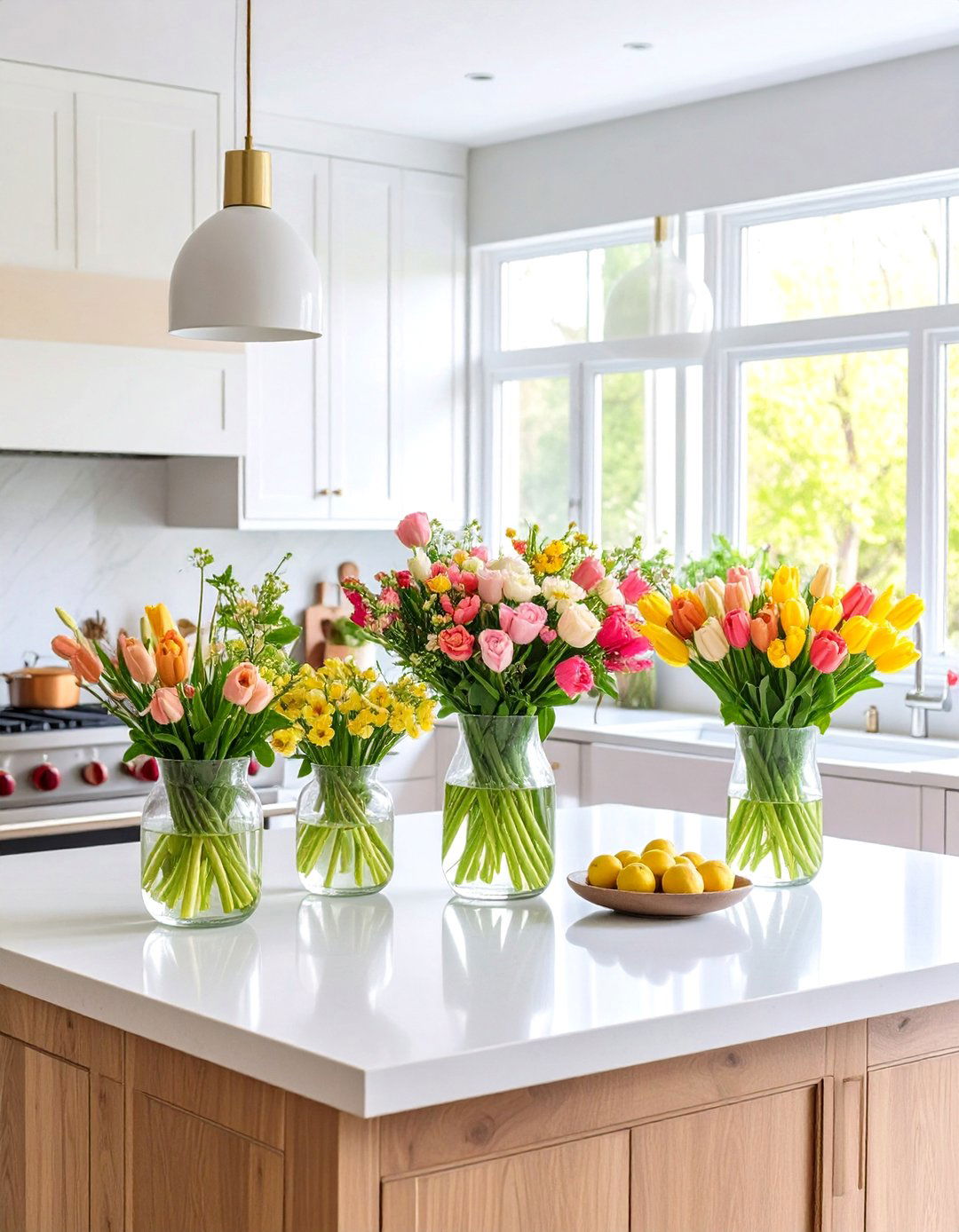
Transform your kitchen island into a dynamic seasonal showcase with carefully curated fresh flower arrangements that evolve throughout the year. Spring brings vibrant tulips and daffodils in tall glass vases, creating an uplifting atmosphere with soft pastels and natural textures. Summer calls for bold sunflowers and citrus-themed displays featuring bright oranges and yellows that complement warm-weather entertaining. Autumn arrangements incorporate deep-hued chrysanthemums, burgundy dahlias, and rich foliage that mirrors the changing landscape outside. Winter centerpieces feature elegant amaryllis, white roses, or festive poinsettias paired with metallic accents for sophisticated holiday appeal. The key lies in selecting vessels that complement your kitchen's color palette while choosing flowers that can withstand kitchen humidity and temperature fluctuations, ensuring your centerpiece remains fresh and vibrant.
2. Rustic Fruit Bowl Kitchen Island Centerpiece
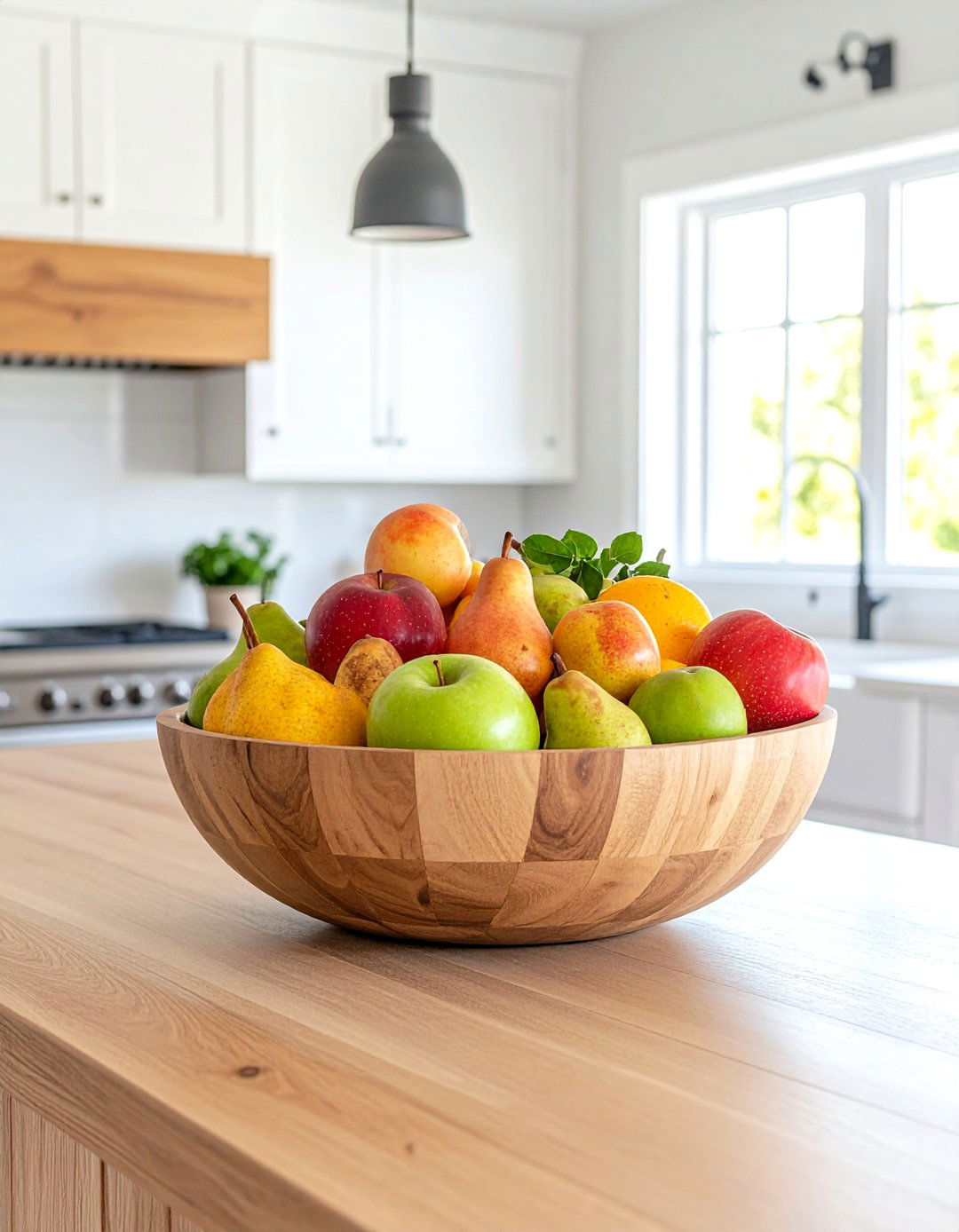
Create an inviting farmhouse atmosphere with carefully arranged seasonal fruit displays that combine natural beauty with practical accessibility. Choose handcrafted wooden bowls, woven baskets, or vintage-inspired ceramic vessels that reflect authentic countryside charm and complement your kitchen's existing finishes. Layer different fruits by color and texture, combining smooth citrus with rough-skinned melons or glossy apples with matte pears for visual interest. Seasonal transitions keep the display fresh – bright summer berries and stone fruits give way to autumn's harvest of apples, pears, and pomegranates, while winter brings vibrant citrus that brightens shorter days. Position the bowl slightly off-center to maintain visual balance while allowing for functional workspace around it. This approach not only provides beautiful decoration but encourages healthy snacking and adds wonderful natural aromas to your cooking space throughout the day.
3. Layered Height Elegant Kitchen Island Centerpiece
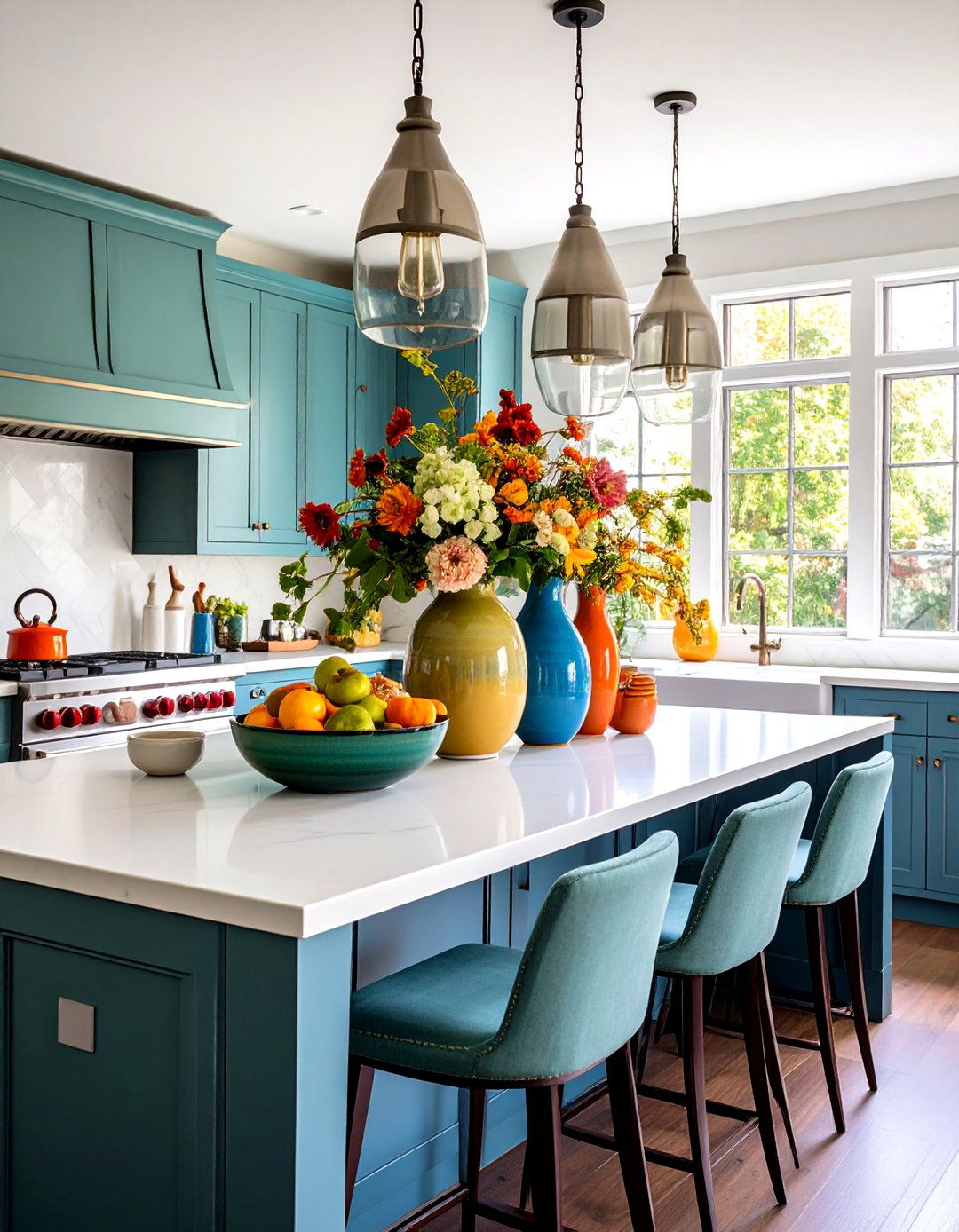
Master the art of sophisticated styling by creating dynamic visual interest through carefully orchestrated height variations that draw the eye upward and create depth across your island surface. Begin with a foundation tray in marble, wood, or metal that anchors your arrangement and defines the designated styling area. Layer tall elements like slender ceramic vases, candlesticks, or sculptural objects at varying heights to create an ascending visual rhythm. Medium-height items such as small potted plants, decorative bowls, or books add substance to the middle ground. Complete the composition with low-profile elements like scattered votives, small decorative objects, or textural elements that ground the entire arrangement. Choose a cohesive color palette of two to three tones to maintain sophistication while varying textures between smooth glass, rough ceramics, polished metals, and natural wood for tactile appeal.
4. Modern Minimalist Kitchen Island Centerpiece

Embrace the power of restraint with a carefully edited selection of high-impact pieces that embody contemporary elegance and clean-lined sophistication. Select one statement vessel – perhaps an oversized ceramic urn, sculptural glass vase, or geometric metal bowl – that serves as the focal point and reflects your kitchen's modern aesthetic. Choose pieces in neutral tones like white, black, charcoal, or warm gray that complement sleek cabinetry and stone countertops. The beauty lies in perfect proportions and premium materials rather than elaborate arrangements. Consider adding a single dramatic element like tall bare branches, a few perfect stems, or a collection of smooth river stones for organic contrast. This approach maintains functionality while creating visual impact, allowing the architecture and materials of your kitchen to shine. The result is a centerpiece that feels intentional, sophisticated, and effortlessly chic without competing with your kitchen's clean lines.
5. Vintage Farmhouse Kitchen Island Centerpiece
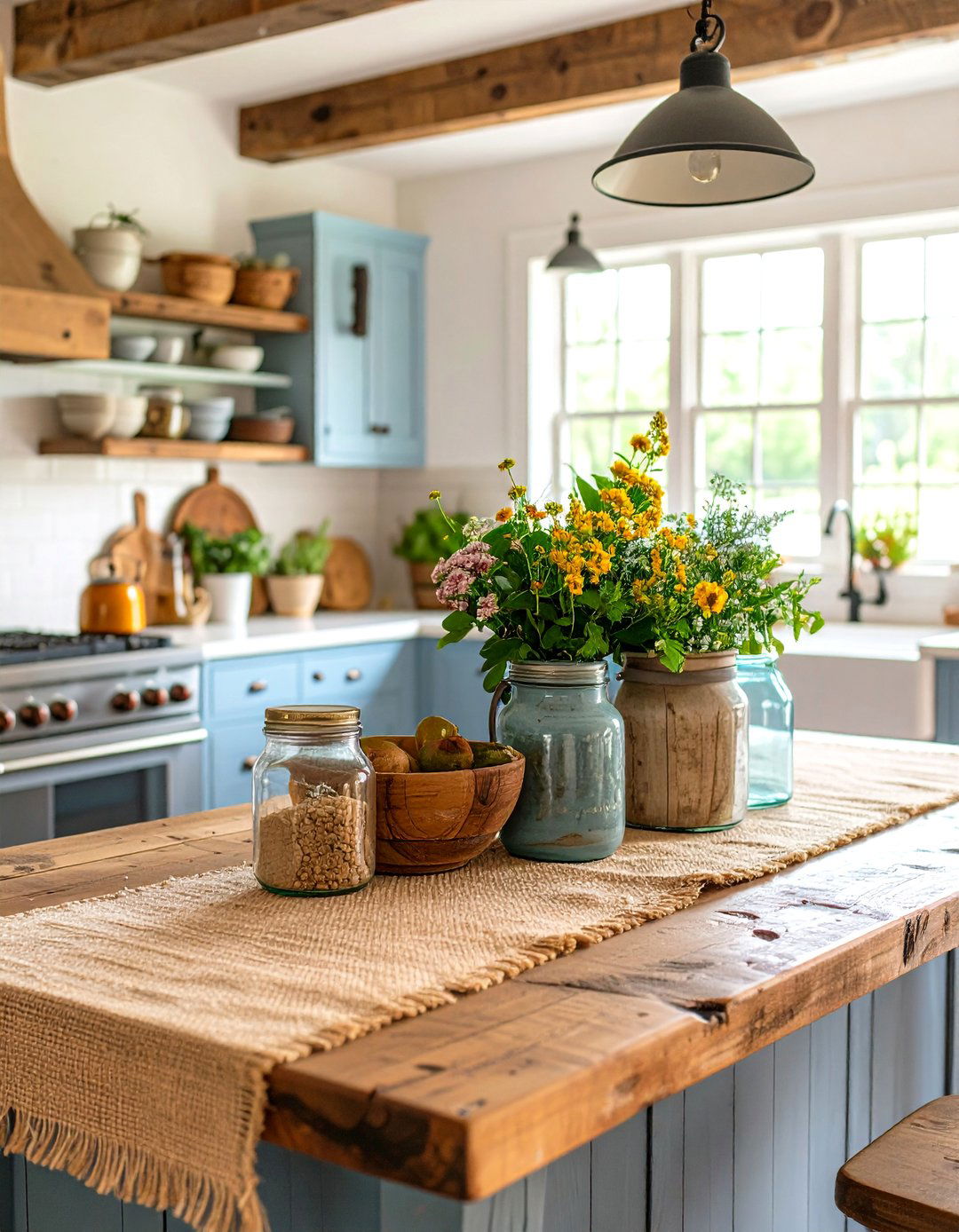
Channel authentic countryside charm by combining carefully selected vintage elements that tell a story of traditional kitchen heritage and timeless functionality. Anchor your arrangement with a weathered wooden dough bowl, antique scale, or vintage milk pitcher that serves as both decoration and conversation piece. Layer in mason jars filled with wooden cooking utensils, dried flowers, or fresh herbs that you can actually use while cooking. Add texture with burlap runners, vintage tea towels, or small potted herbs in terra cotta containers that reinforce the farmhouse aesthetic. Include functional elements like a vintage cutting board displayed upright, antique canisters for storage, or a rustic breadbox that maintains the working kitchen feel. The key is mixing authentic vintage finds with practical items, creating a centerpiece that feels lived-in and useful rather than purely decorative, perfectly capturing the farmhouse philosophy of beautiful functionality.
6. Herb Garden Kitchen Island Centerpiece
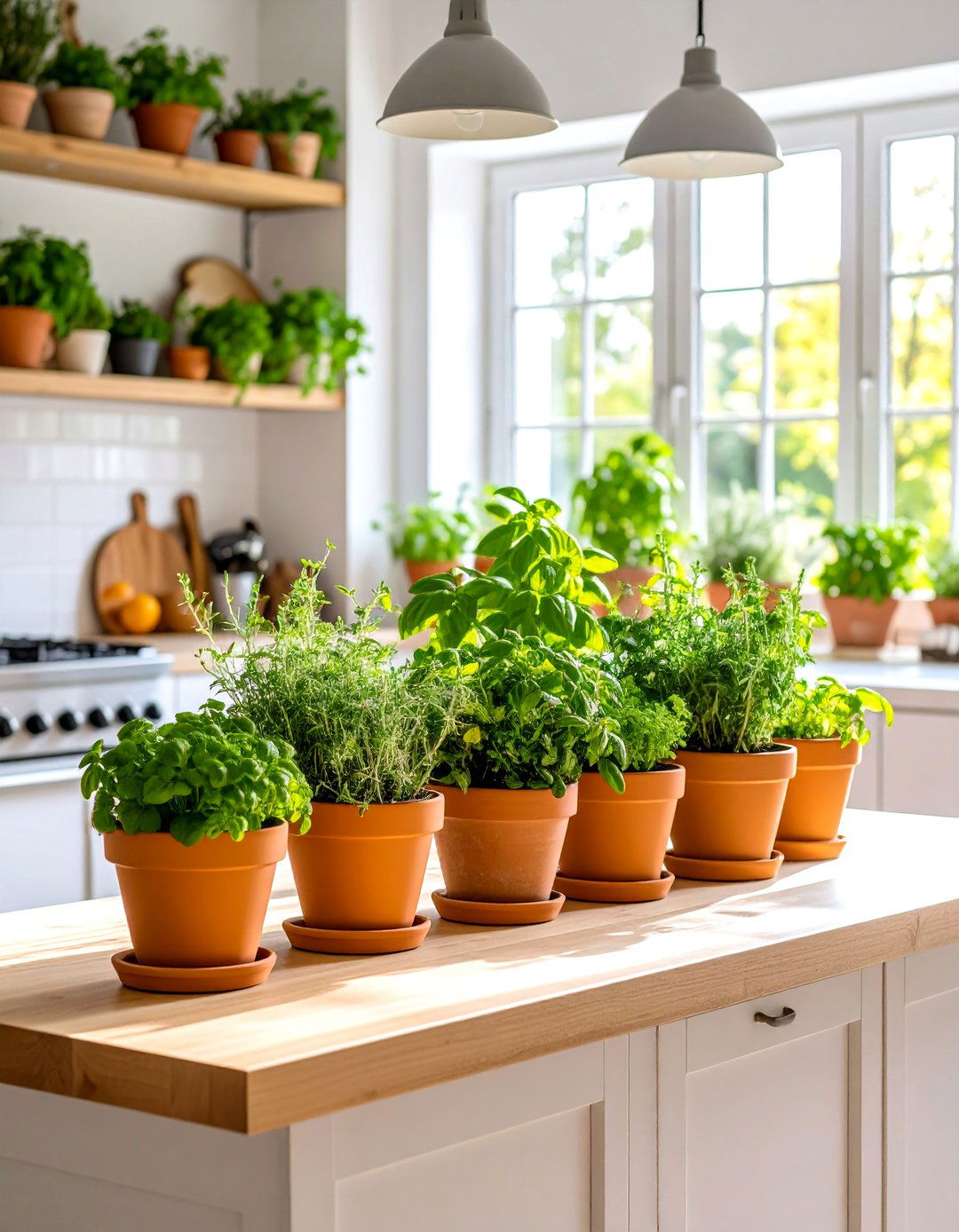
Transform your kitchen island into a living, aromatic garden that provides fresh ingredients while creating a vibrant, natural centerpiece that connects your cooking space to nature. Select a variety of culinary herbs like basil, rosemary, thyme, and mint in matching terra cotta pots or a long wooden planter that accommodates multiple varieties. Arrange herbs by height and color, placing taller rosemary and sage toward the back with lower-growing basil and oregano in front for easy access. Consider adding small plant markers or vintage-style labels for both function and charm. Include a small watering can, gardening shears, and perhaps a wooden tray to catch any drainage. This living centerpiece requires adequate natural light, so position it accordingly, and rotate plants occasionally for even growth. The result is a constantly evolving display that provides fresh flavors for your cooking while filling your kitchen with natural fragrance and vibrant green color.
7. Luxury Statement Kitchen Island Centerpiece
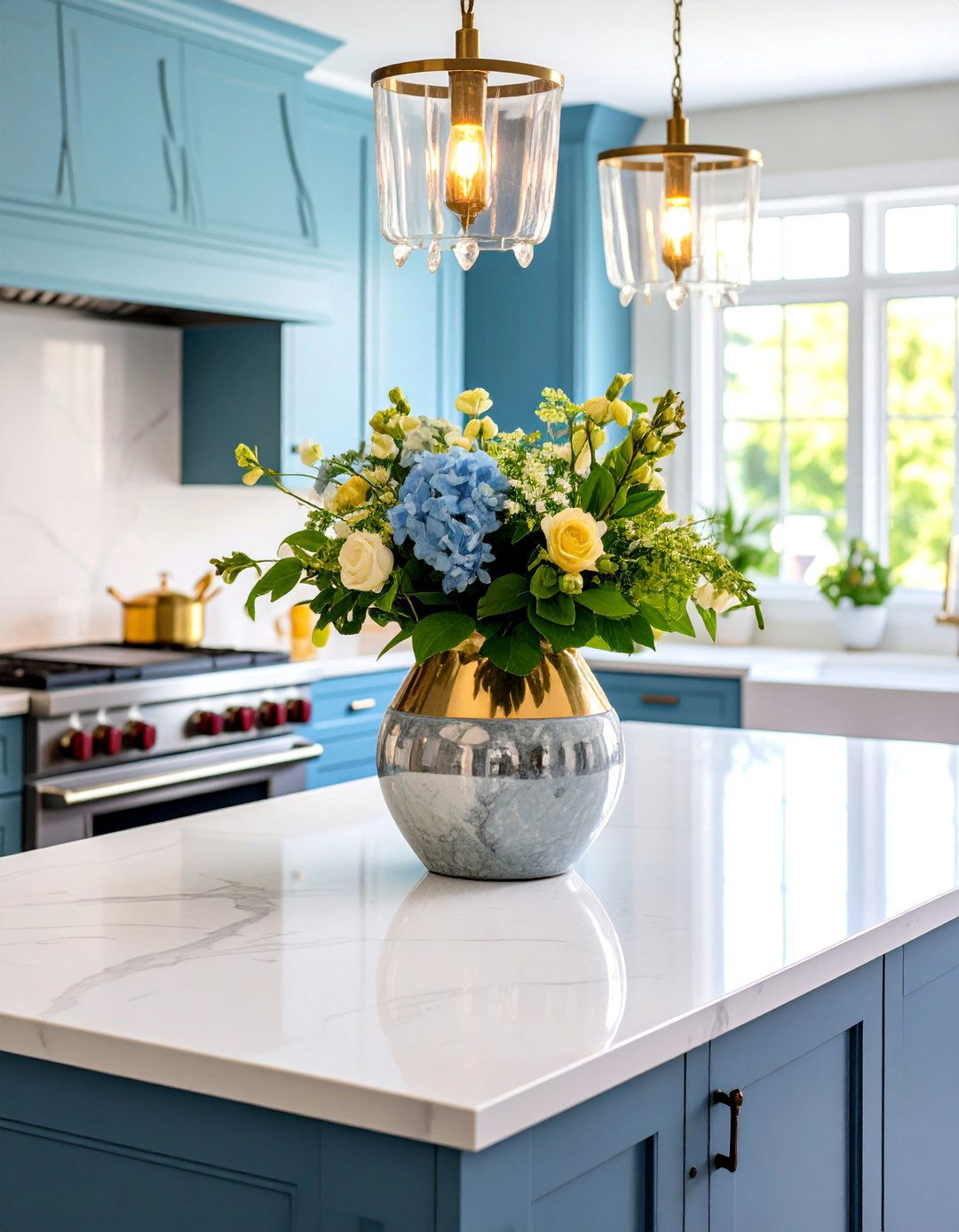
Create an opulent focal point that elevates your kitchen to sophisticated heights with carefully selected premium materials and sculptural elements that command attention while maintaining elegant restraint. Choose one show-stopping piece as your foundation – perhaps a large vessel carved from natural stone, an artisan-blown glass sculpture, or a handcrafted metal bowl with intricate detailing. Support this central element with complementary luxury materials like marble pedestals, crystal votives, or metallic accents in brushed gold or polished silver. The key lies in investing in fewer, higher-quality pieces rather than numerous smaller items. Consider adding subtle lighting elements like LED strips beneath vessels or strategically placed spotlights that highlight textures and create dramatic shadows. This approach works particularly well in kitchens with premium finishes like marble countertops, high-end appliances, and custom cabinetry, where the centerpiece serves as the crowning jewel that ties together the entire luxury aesthetic.
8. Natural Branch and Foliage Kitchen Island Centerpiece
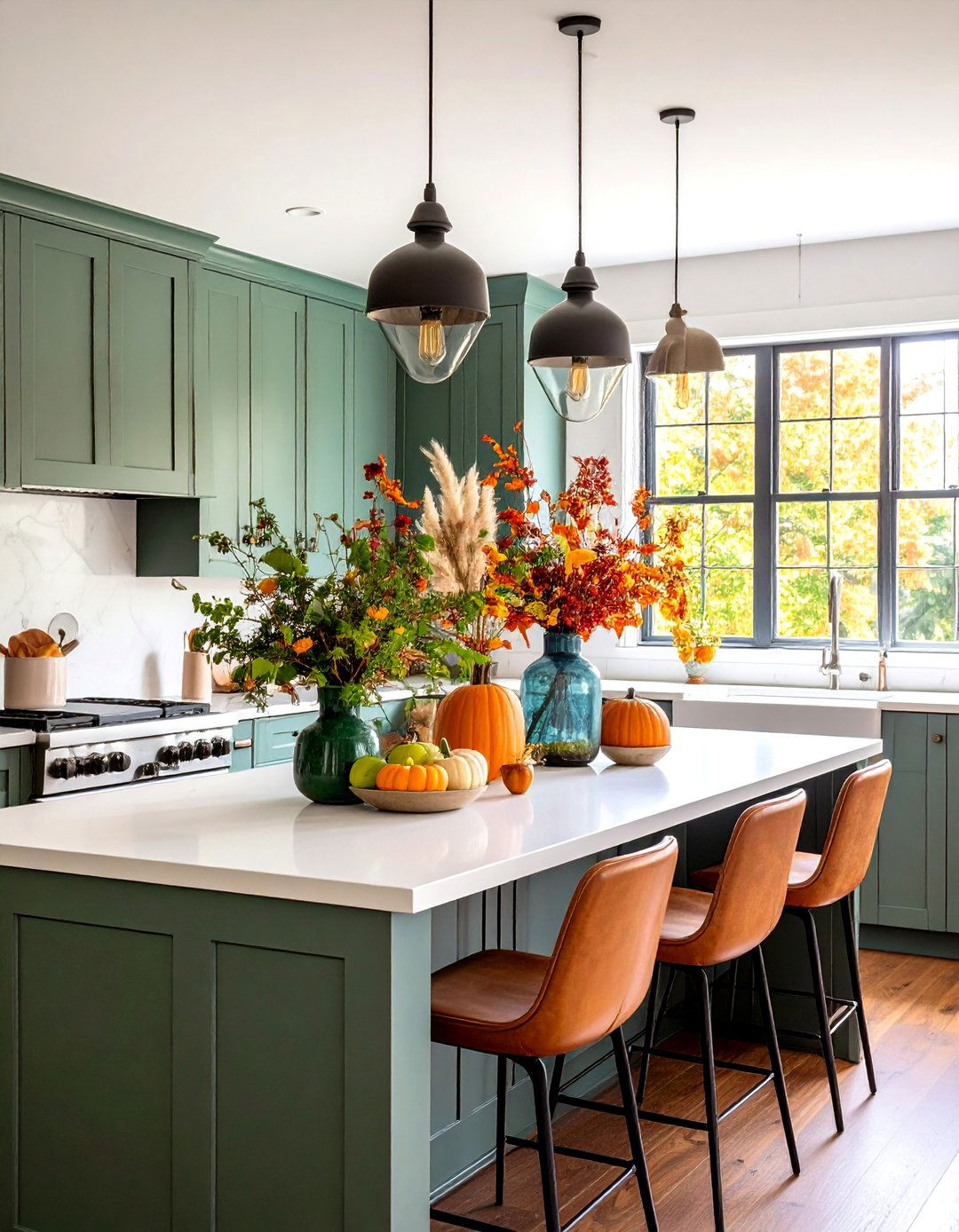
Bring the outdoors inside with an organic arrangement featuring carefully selected branches, dried grasses, and natural elements that create dramatic height while maintaining an effortless, foraged aesthetic. Choose tall vessels in neutral tones – ceramic urns, glass cylinders, or rustic pottery – that can accommodate substantial branch arrangements without overwhelming your island's proportions. Select branches that reflect the current season: flowering cherry or forsythia in spring, full green foliage in summer, colorful maple or oak in autumn, and interesting bare branches or evergreen boughs in winter. Mix textures by combining smooth branches with textural elements like pampas grass, cattails, or eucalyptus for visual interest. The arrangement should feel naturally gathered rather than formally arranged, with branches at varying heights and angles. This centerpiece works beautifully in kitchens with high ceilings and creates a strong vertical element that draws the eye upward while adding organic warmth to contemporary spaces.
9. Artisan Pottery Collection Kitchen Island Centerpiece
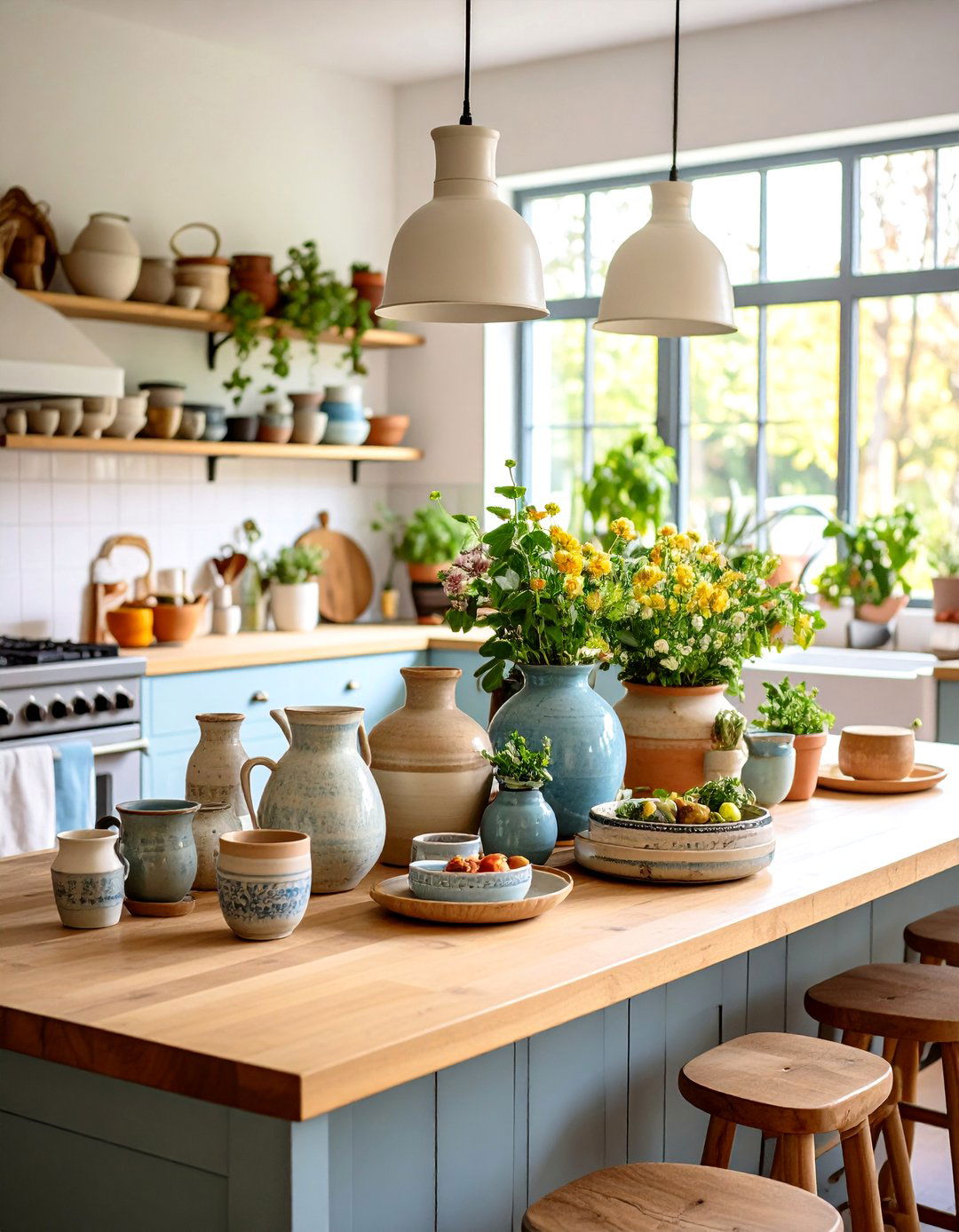
Showcase handcrafted ceramics and pottery that reflect artisanal craftsmanship while creating a rich, textural centerpiece that celebrates the maker's art and adds warmth to your kitchen environment. Gather vessels of varying sizes and shapes – perhaps mixing wide, low bowls with tall, narrow vases and medium-sized urns – all unified by similar glazes, earth tones, or complementary firing techniques. Arrange pieces with careful attention to negative space, allowing each piece to breathe while creating visual relationships between forms. Fill some vessels with seasonal elements like dried grasses, smooth stones, or fresh flowers, while leaving others empty to highlight their sculptural qualities. The beauty lies in the subtle variations that only handmade pieces possess – slight irregularities in shape, unique glaze patterns, and the tactile quality that machine-made items cannot replicate. This approach works particularly well in kitchens that embrace natural materials and celebrates the intersection of functionality and artistry.
10. Monochromatic Elegance Kitchen Island Centerpiece
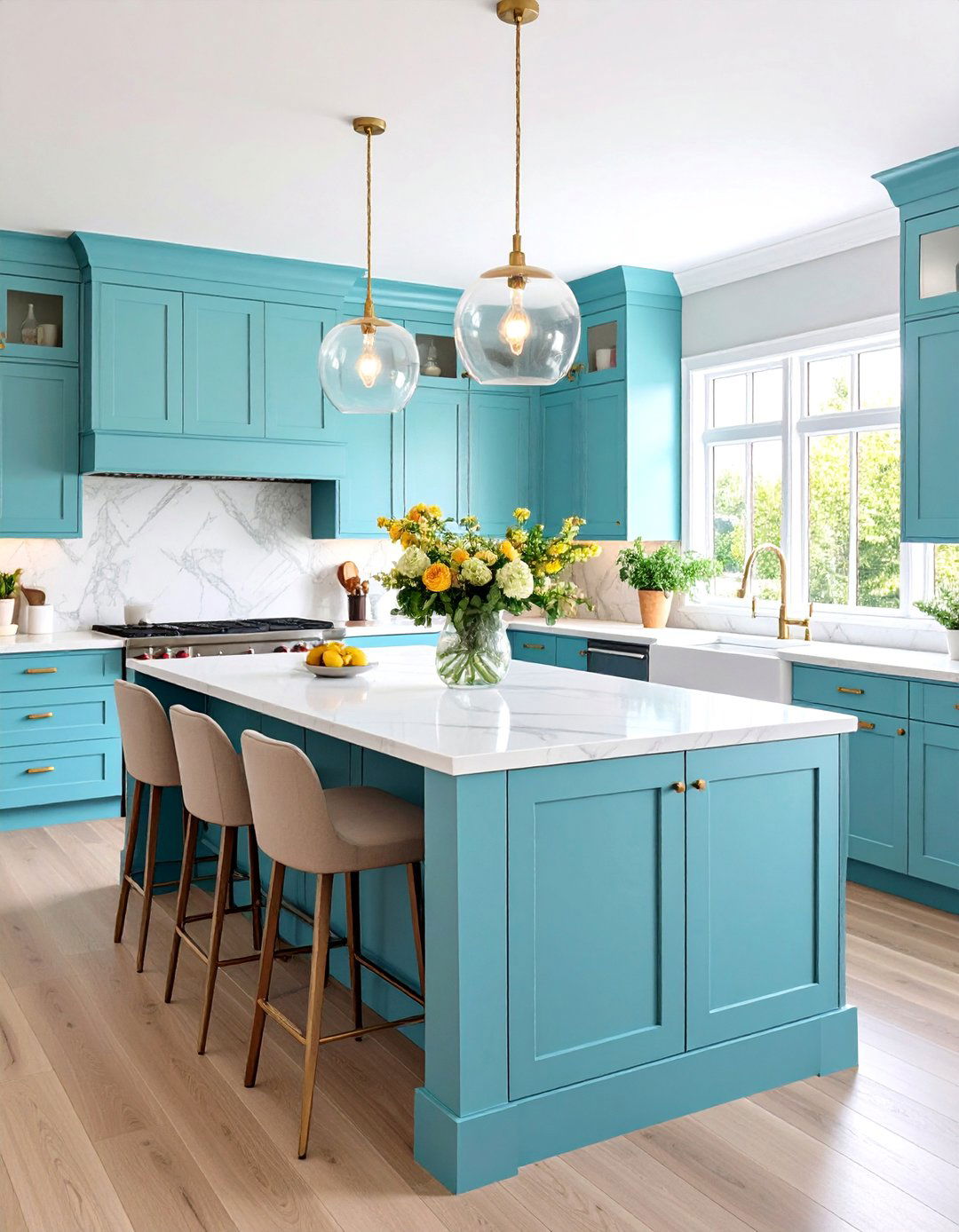
Create sophisticated visual impact through careful exploration of a single color family, using varying shades, textures, and materials to achieve depth and interest without relying on contrasting hues. Choose your base color from your kitchen's existing palette – perhaps warm whites, soft grays, rich charcoals, or natural beiges – then layer different tones and textures within that family. Combine matte and glossy finishes, smooth and rough textures, and hard and soft materials to create complexity within the monochromatic scheme. For example, a white theme might include glossy ceramic vessels, matte plaster bowls, cream-colored candles, and textural white coral or driftwood. The result is a centerpiece that feels cohesive and calming while demonstrating sophisticated design sensibility. This approach works particularly well in contemporary and transitional kitchens where the goal is creating visual interest without introducing additional colors that might compete with the overall design scheme.
11. Functional Display Kitchen Island Centerpiece
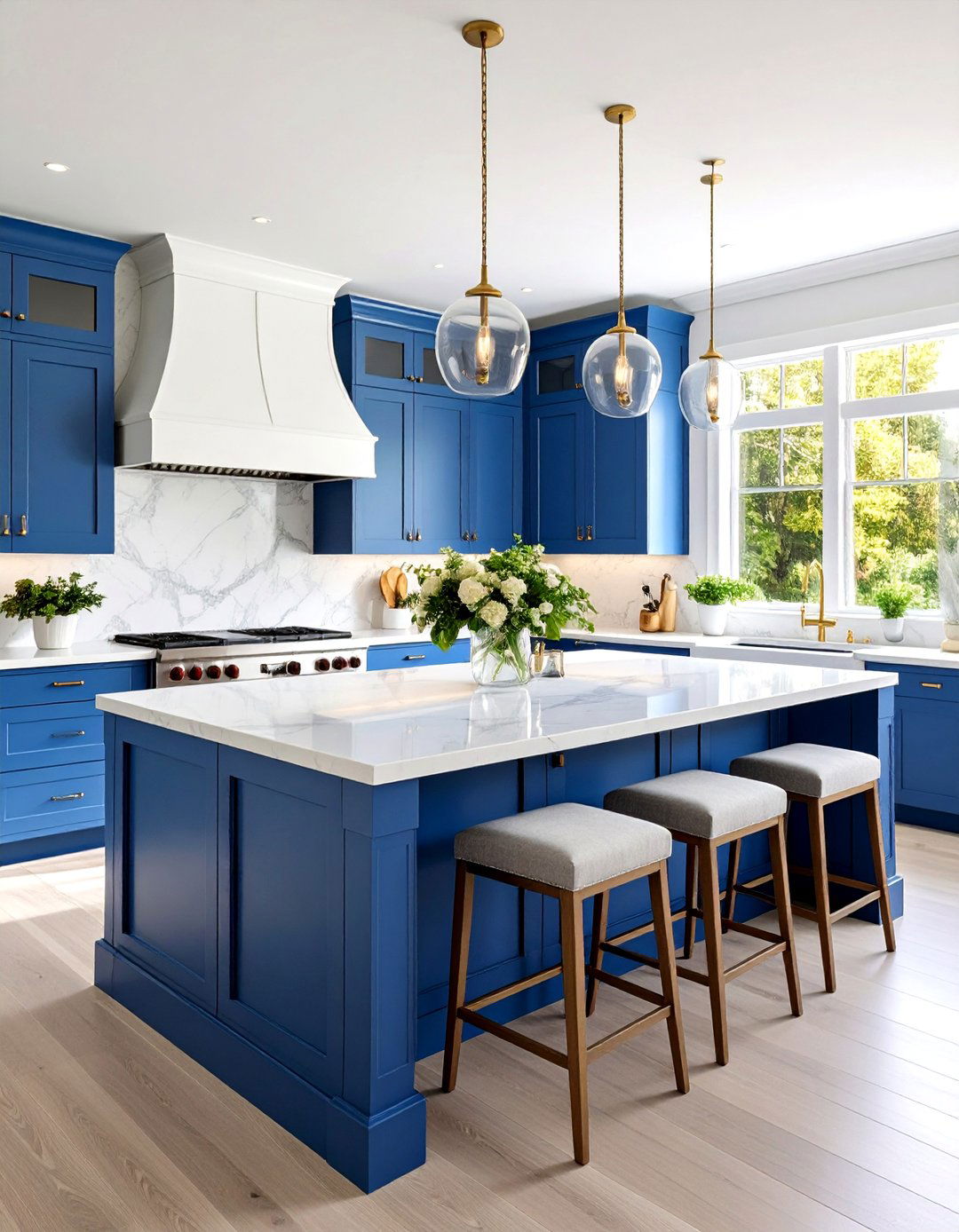
Design a centerpiece that seamlessly blends beauty with everyday functionality, featuring items you actually use while cooking and entertaining, creating a "working still life" that reflects real kitchen life. Arrange beautiful serving pieces, cutting boards, and kitchen tools in an aesthetically pleasing composition that remains accessible for daily use. Consider displaying a collection of wooden cutting boards in various sizes, high-quality olive oil and vinegar in elegant bottles, a beautiful mortar and pestle, or artisan salt and pepper mills. Add height with a tiered serving stand displaying seasonal fruit or fresh baked goods. Include a beautiful tea kettle, coffee accessories, or wine opener – items that earn their place through both beauty and utility. The key is selecting functional items that are inherently beautiful and maintaining the arrangement's visual appeal even when items are in active use. This approach perfectly suits busy households where the kitchen island serves multiple purposes throughout the day.
12. Seasonal Holiday Kitchen Island Centerpiece
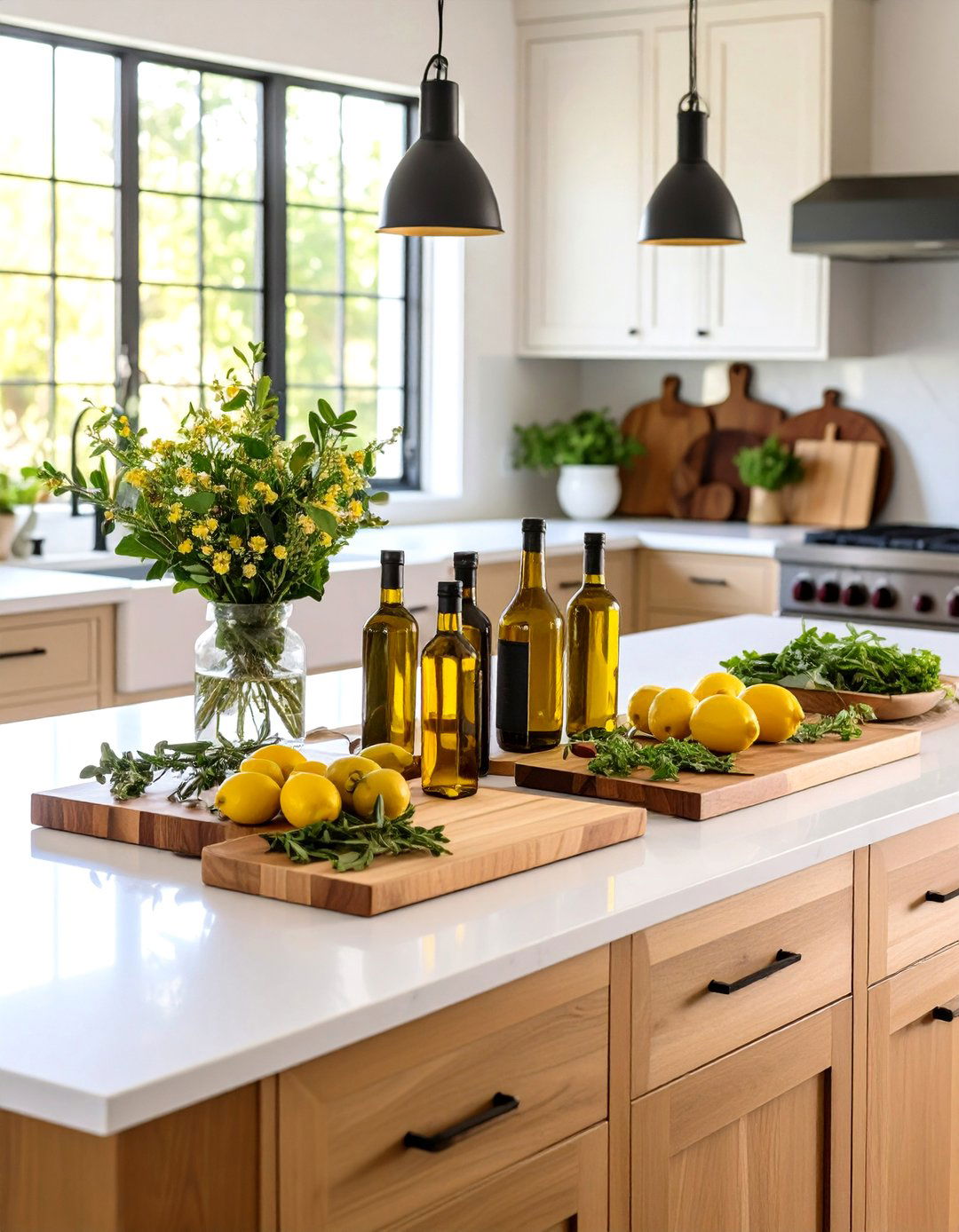
Transform your kitchen island to celebrate special occasions and holidays throughout the year with themed arrangements that bring festive spirit to your daily cooking and gathering space. Spring celebrations feature pastel color palettes with Easter eggs, fresh spring flowers, and lightweight decorative elements like ceramic bunnies or bird figurines. Summer entertaining calls for bright, cheerful displays with citrus fruits, nautical elements, or patriotic touches for Independence Day. Autumn arrangements embrace harvest themes with pumpkins, gourds, corn stalks, and warm-toned candles creating cozy thanksgiving ambiance. Winter holidays bring evergreen garlands, pinecones, metallic accents, and perhaps small LED string lights for magical sparkle. The key is creating displays that feel festive without becoming overwhelming or impractical for kitchen use. Choose elements that can be easily refreshed or modified as holidays pass, maintaining your kitchen's functionality while celebrating seasonal joy and creating memorable gathering spaces for family traditions.
13. Industrial Modern Kitchen Island Centerpiece
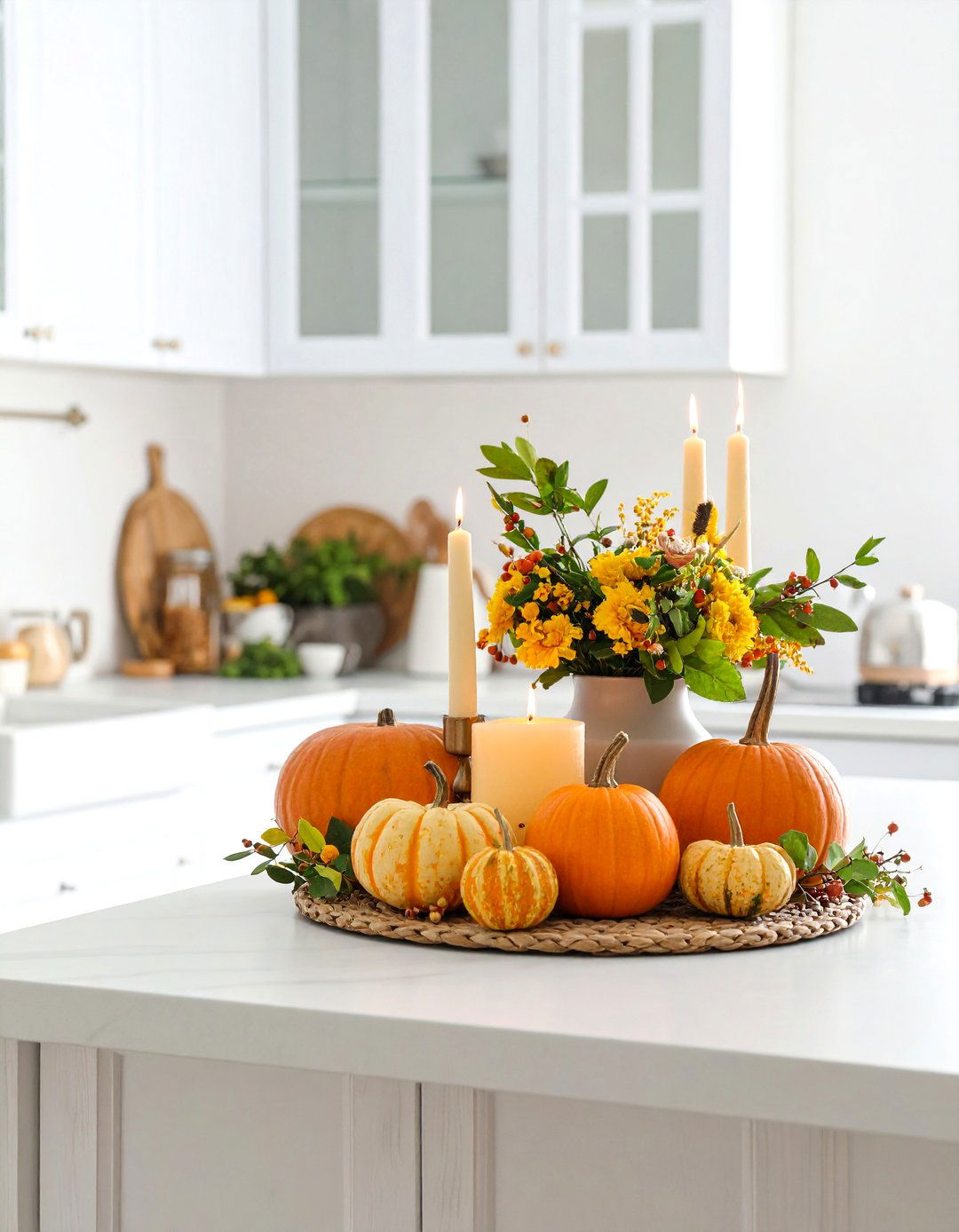
Embrace contemporary urban aesthetics with a centerpiece featuring clean lines, mixed metals, and architectural elements that complement modern kitchen design while adding sophisticated edge to your space. Combine materials like brushed steel, matte black iron, copper, and concrete to create visual interest through industrial textures and finishes. Consider using geometric vessels, angular candlesticks, or sculptural wire forms that echo contemporary architectural elements. Add warmth with carefully selected wood elements – perhaps a live-edge serving board or a piece of reclaimed timber – that prevent the arrangement from feeling too cold. Include elements with functional purpose like a sleek fruit bowl, modern tool holder, or contemporary spice containers that maintain the working kitchen aesthetic. The goal is creating a centerpiece that feels intentionally curated and architecturally relevant, reflecting the precision and clarity associated with modern industrial design while maintaining livability and warmth essential for kitchen environments.
14. Coastal Natural Kitchen Island Centerpiece
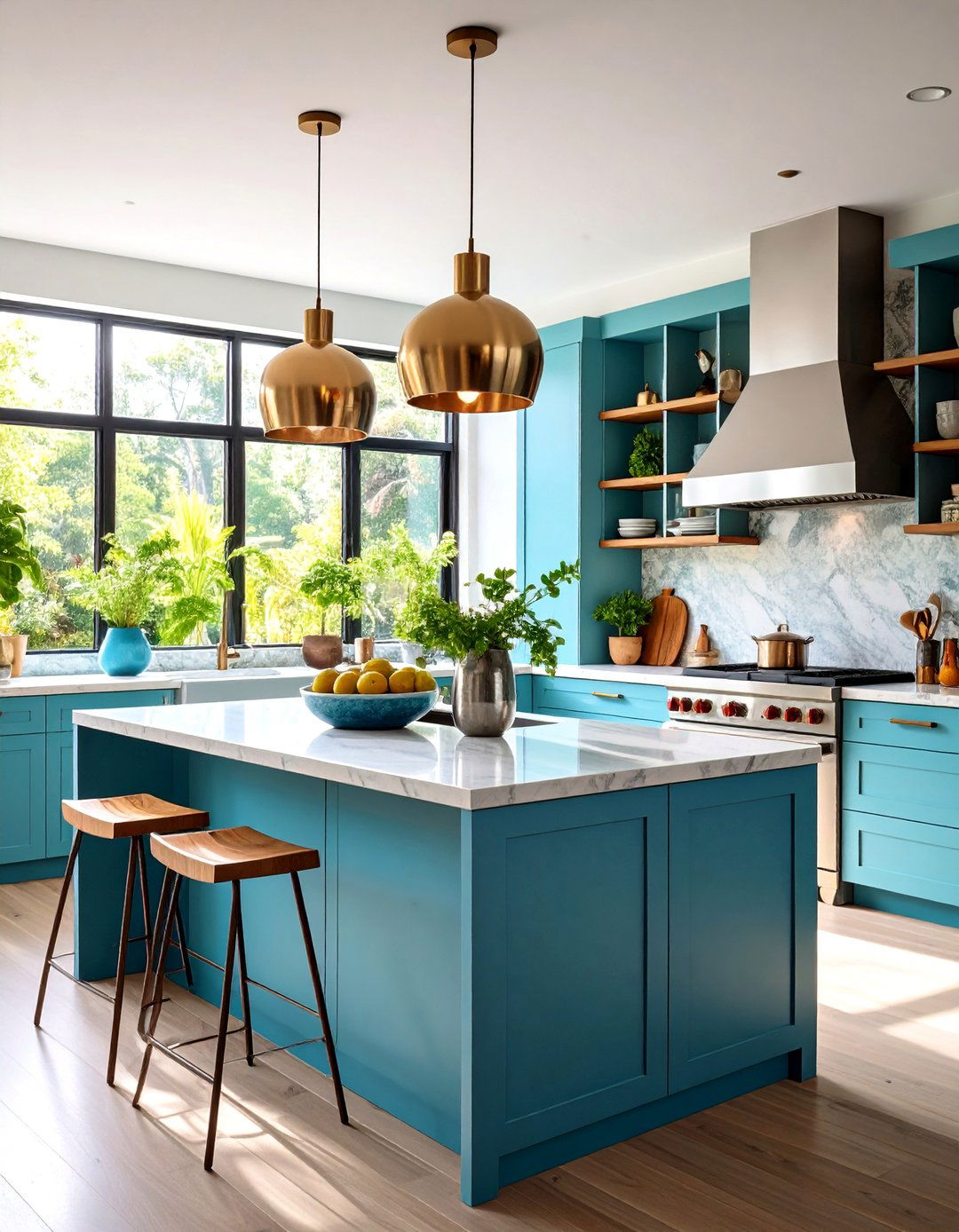
Capture the serene beauty of seaside living with natural materials and ocean-inspired elements that bring calming coastal energy to your kitchen while reflecting the relaxed elegance of beachside design. Use weathered wood bases, sea glass vessels, and natural rope or jute textures that echo coastal materials and create authentic seaside atmosphere. Fill vessels with elements like smooth beach stones, sand dollars, driftwood pieces, or coral specimens that bring actual beach finds into your kitchen design. Add living elements with air plants, succulents, or grasses that thrive in coastal conditions and require minimal maintenance. Include subtle nautical touches like rope-wrapped vases, marine-inspired ceramics, or pieces in ocean blues and sandy beiges. The arrangement should feel naturally collected rather than themed, as if beautiful pieces were gradually gathered during peaceful beach walks. This approach works beautifully in kitchens with white or light wood cabinetry, natural stone countertops, and plenty of natural light.
15. Mixed Texture Kitchen Island Centerpiece
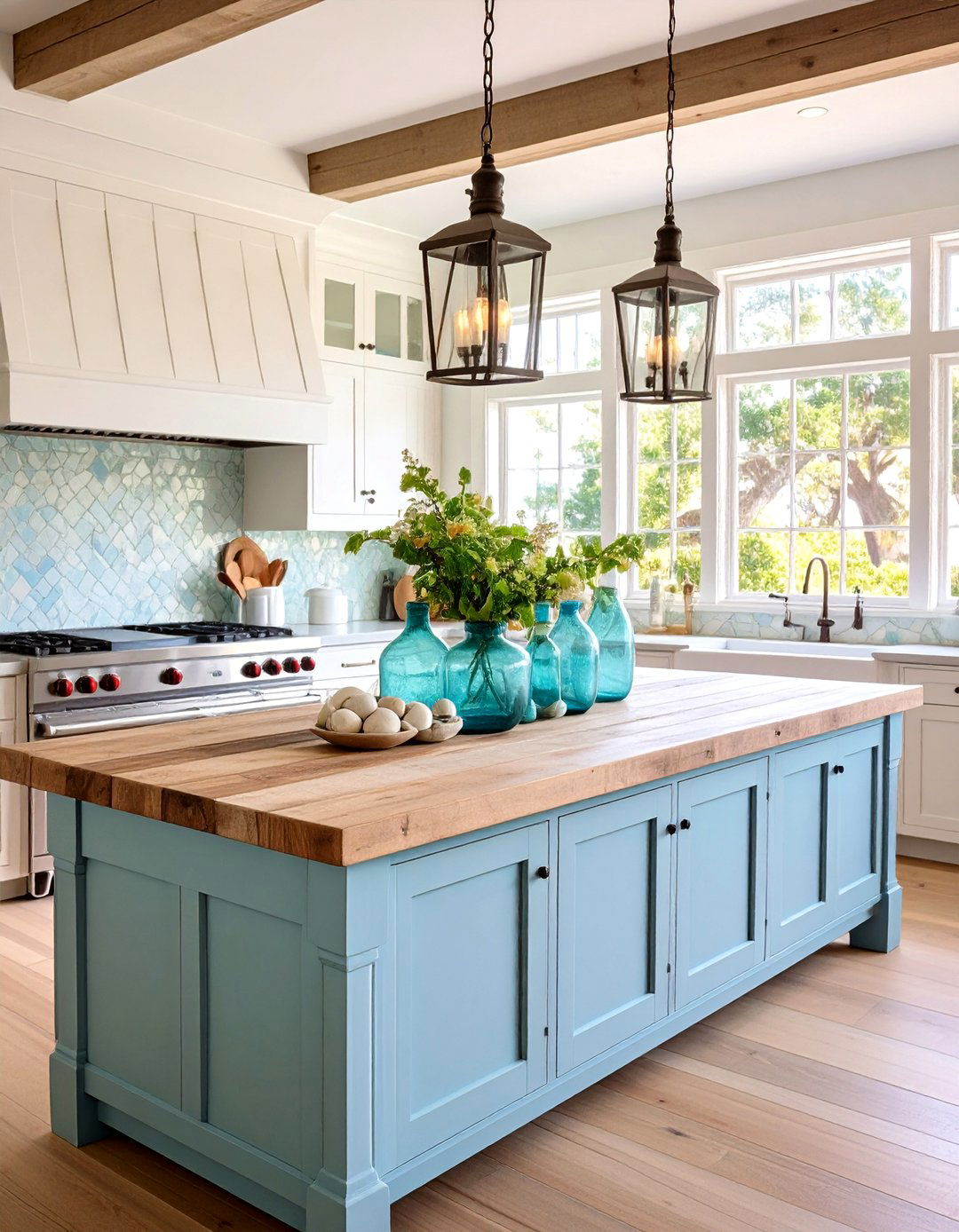
Create rich visual and tactile interest by thoughtfully combining diverse materials and surfaces that invite both visual appreciation and physical interaction, transforming your island into a sensory experience. Layer smooth elements like polished stone or glass with rough textures like woven baskets, natural wood, or hammered metal to create compelling contrasts. Include soft textiles through table runners, cloth napkins, or small cushions alongside hard surfaces like ceramic or metal vessels. Vary surface treatments between matte and glossy finishes, adding depth through light reflection and absorption. Consider including natural textures like pine cones, river stones, or unfinished wood alongside refined elements like polished silver or crystal. The key is maintaining balance – too many competing textures create chaos, while too few result in bland uniformity. This approach works well in transitional kitchens that blend traditional and contemporary elements, creating centerpieces that feel sophisticated yet approachable and encourage people to touch and interact with the space.
16. Vintage Collection Kitchen Island Centerpiece
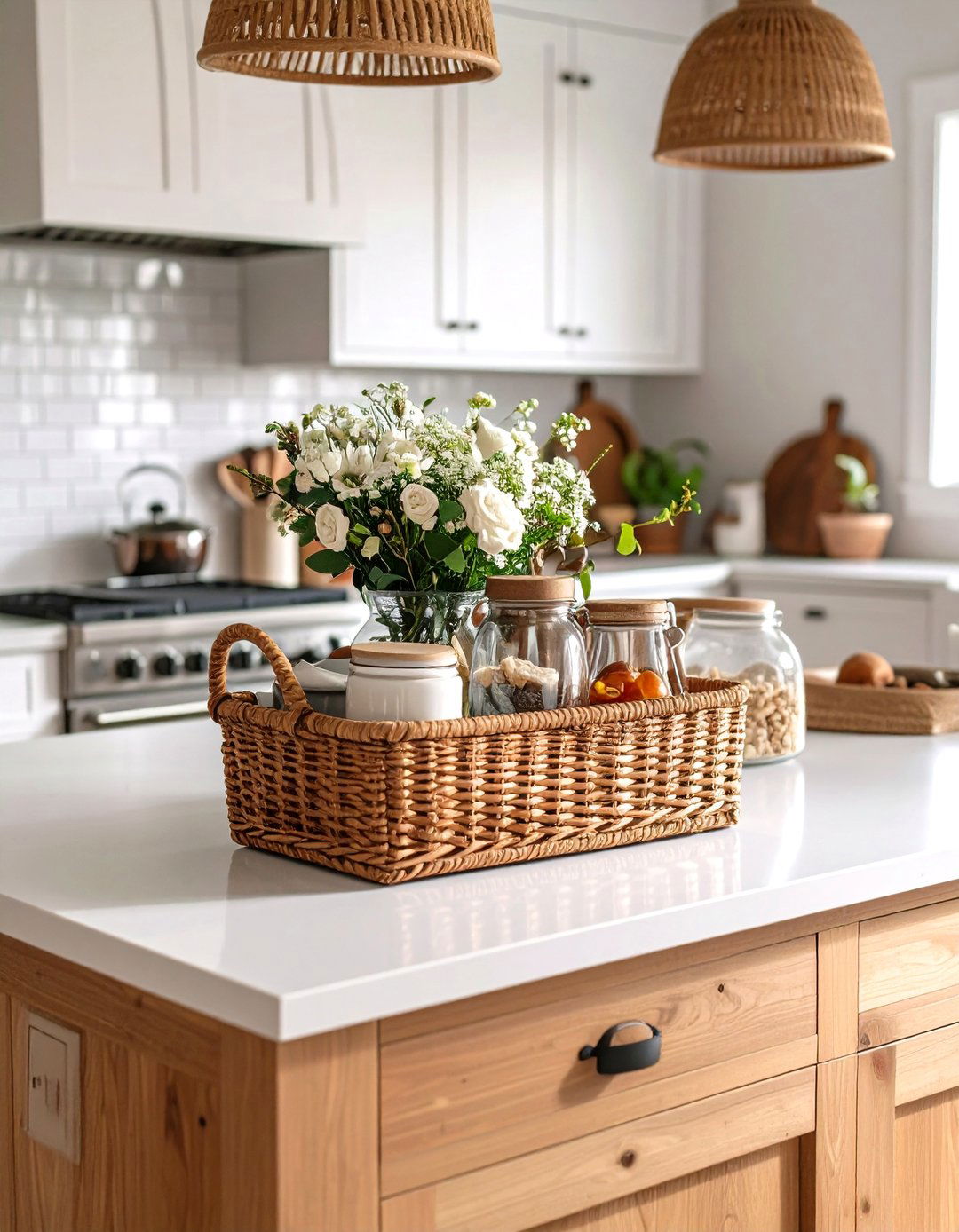
Curate a meaningful display of vintage kitchen artifacts and antique treasures that tell stories while adding authentic character and historical depth to your modern cooking space. Focus on functional vintage pieces that could actually be used – antique mixing bowls, vintage scales, old-fashioned utensil crocks, or depression-era glassware that brings authentic period charm. Arrange items by creating visual relationships between pieces while respecting each item's individual character and patina. Include pieces with interesting backstories, whether family heirlooms or carefully selected antique market finds, that can serve as conversation starters during gatherings. Mix different eras thoughtfully, perhaps combining Art Deco pieces with farmhouse finds or Victorian elements with mid-century modern items. The goal is creating a centerpiece that feels collected over time rather than purchased all at once, reflecting personal history and appreciation for craftsmanship from earlier periods while maintaining relevance in contemporary kitchen design.
17. Geometric Modern Kitchen Island Centerpiece
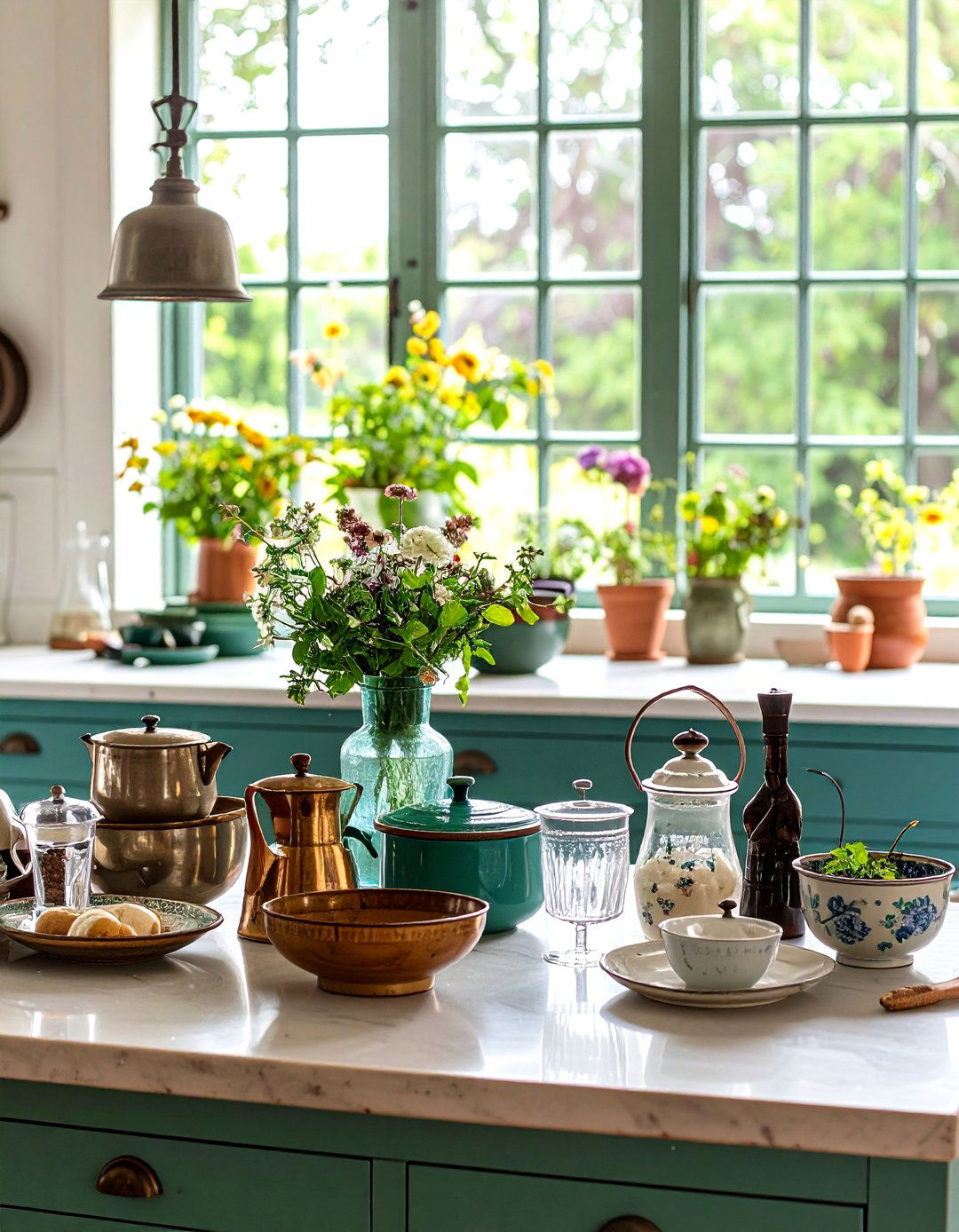
Design a striking contemporary arrangement using clean geometric forms and mathematical relationships that reflect modern architectural principles while creating visual rhythm and sophisticated structure. Select vessels and objects featuring strong geometric shapes – cubes, spheres, cylinders, pyramids, or hexagons – that can be arranged to create pleasing proportional relationships. Use repetition and variation to establish visual rhythm, perhaps grouping three cylindrical vases of different heights or arranging square and rectangular forms in deliberate patterns. Choose a limited color palette that emphasizes form over decoration, focusing on how shapes interact with light and shadow. Consider including elements with interesting geometric patterns or textures that complement the overall formal structure. This approach works particularly well in contemporary kitchens with sleek cabinetry and minimal hardware, where the centerpiece serves as a sculptural element that enhances the kitchen's architectural qualities. The result should feel purposeful and mathematically pleasing while maintaining the warmth necessary for comfortable living spaces.
18. Candlelit Ambiance Kitchen Island Centerpiece
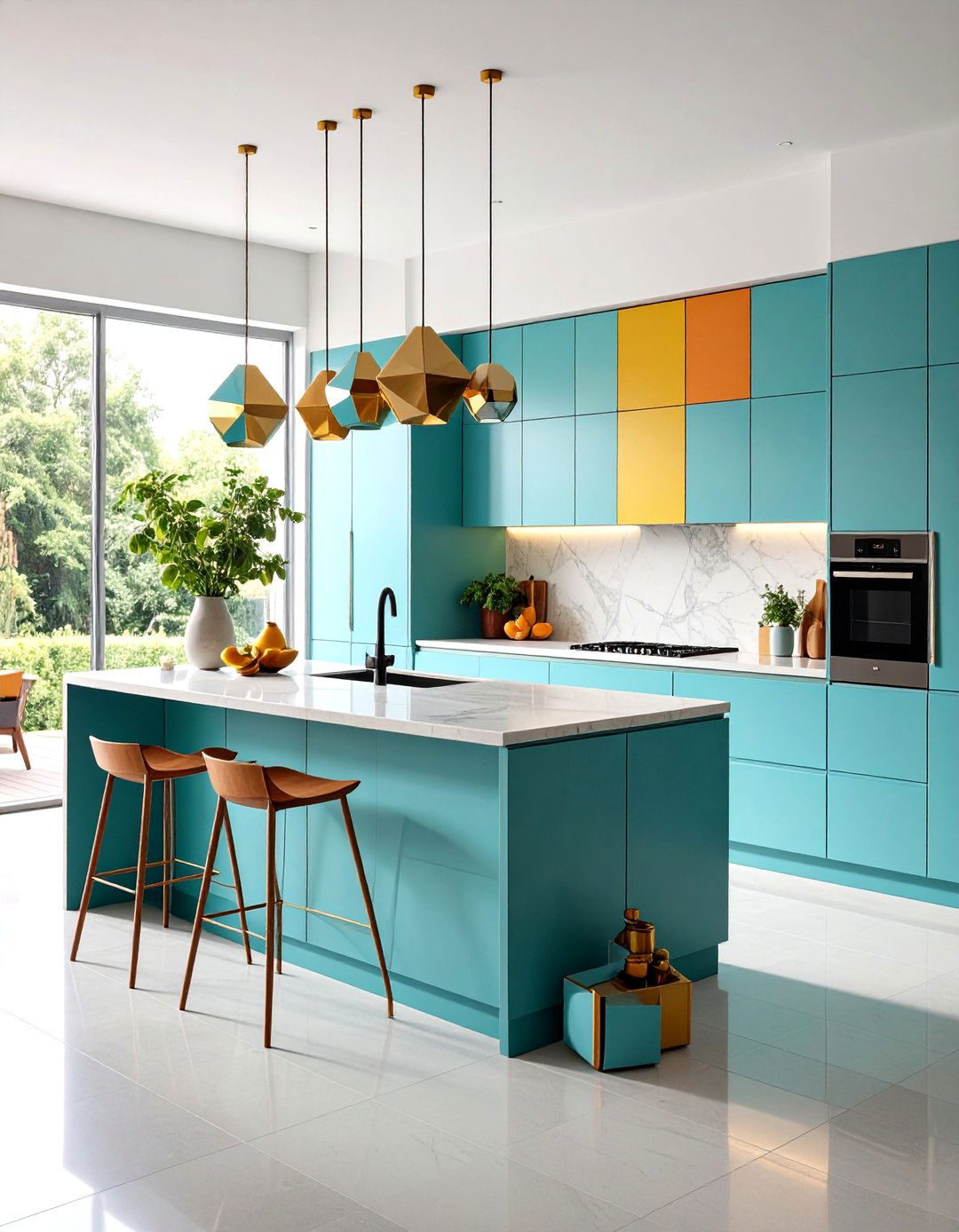
Create an inviting atmospheric glow that transforms your kitchen island into an intimate gathering space through thoughtfully arranged candles that provide both beautiful light and sophisticated elegance. Combine candles of varying heights, widths, and styles – pillar candles in glass hurricanes, taper candles in elegant holders, and small votives scattered throughout the arrangement. Use a mix of candle holders in complementary materials like brass, silver, crystal, or ceramic that reflect your kitchen's finish palette. Create safe burning environments with proper spacing and stable bases, ensuring no candles are placed near cooking areas or flammable materials. Consider battery-operated LED candles for areas where open flames aren't practical while maintaining the warm glow effect. Group candles in odd numbers and vary heights to create visual interest without blocking sightlines across the island. This approach works beautifully for evening entertaining, romantic dinners, or creating cozy family meal atmospheres while adding sophisticated lighting that complements your kitchen's primary illumination.
19. Living Plant Kitchen Island Centerpiece

Bring vibrant life and natural beauty to your kitchen through carefully selected plants that thrive in kitchen conditions while providing fresh air purification and connection to nature. Choose plants that can tolerate kitchen humidity, temperature variations, and available light conditions – perhaps pothos, snake plants, herbs, or small succulents arranged in attractive containers. Create visual interest through varying plant heights, leaf textures, and pot materials, combining tall statement plants with smaller groupings for dynamic composition. Include practical elements like plant saucers to protect surfaces, attractive watering tools, and perhaps plant food or care accessories that become part of the display. Consider rotating plants periodically to ensure even growth and prevent overcrowding in prime kitchen workspace. This living centerpiece requires ongoing care but rewards with constantly changing beauty, fresh air benefits, and the satisfaction of nurturing growing things in your daily cooking environment. The result is a centerpiece that feels fresh, healthy, and alive.
20. Tray-Based Organization Kitchen Island Centerpiece
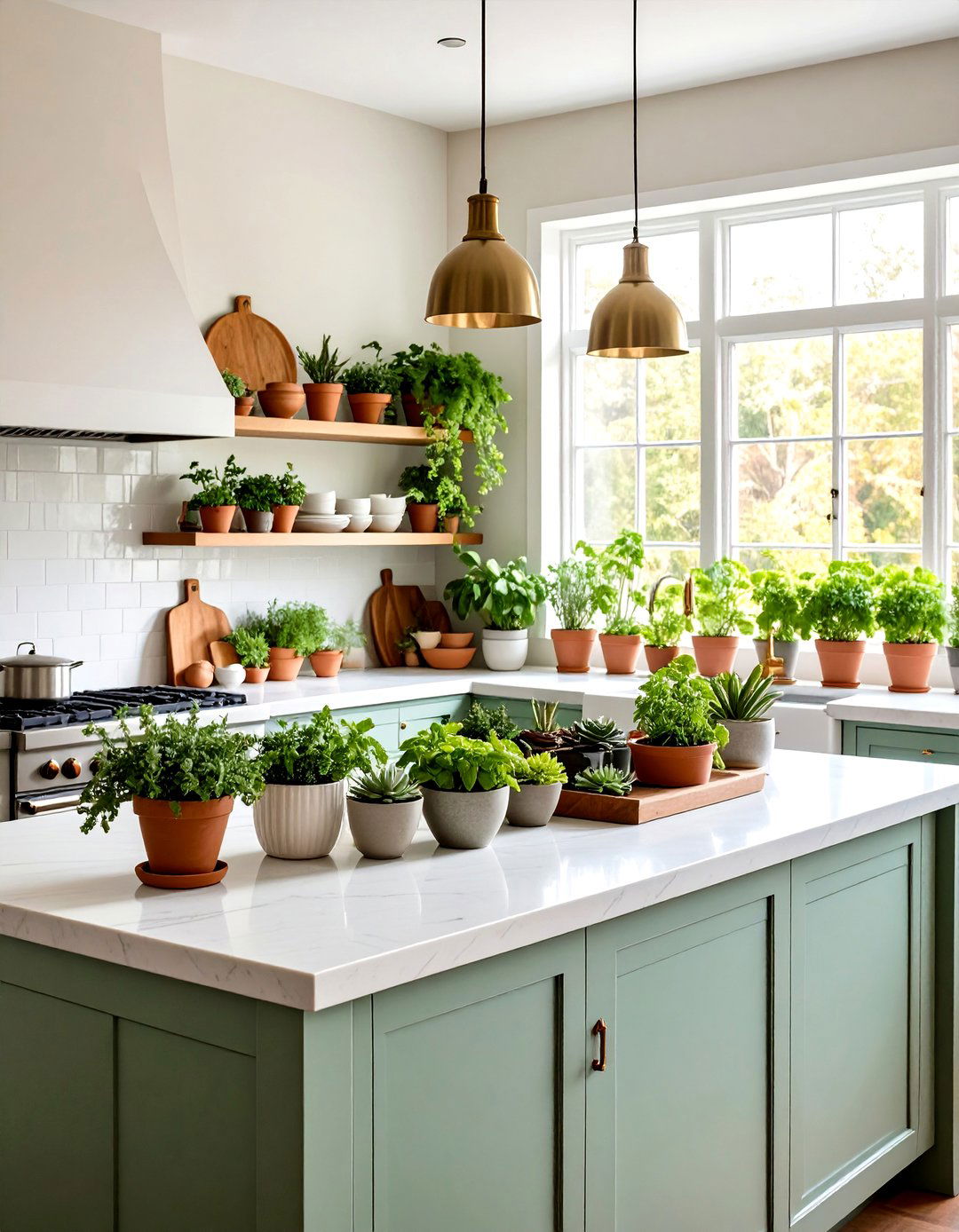
Master the art of contained styling using beautiful trays as foundations that corral decorative elements while maintaining flexibility for easy rearrangement and practical kitchen use. Select trays in materials that complement your kitchen finishes – perhaps marble, wood, metal, or woven materials – in sizes appropriate for your island's proportions. Layer items within the tray boundaries, creating mini-vignettes that feel purposeful and organized rather than scattered. Include both decorative and functional elements, perhaps combining candles with small potted plants, seasonal decorations with useful items like salt cellars or small serving bowls. The tray system allows for easy movement when you need full counter space for cooking projects while maintaining your decorative scheme. Choose items that work well together visually but can serve multiple purposes, creating a centerpiece that adapts to your kitchen's changing needs. This approach works particularly well for busy households where flexibility and functionality are as important as beauty in kitchen design.
Conclusion:
Kitchen island centerpieces serve as powerful design tools that transform functional workspace into captivating focal points reflecting personal style and seasonal celebrations. The key to successful island styling lies in balancing visual appeal with practical functionality, ensuring your centerpiece enhances rather than hinders daily kitchen activities. Whether you choose seasonal flowers, rustic collections, modern minimalism, or layered textures, the most effective centerpieces feel authentic to your lifestyle and complement your kitchen's existing design elements. Remember that the best centerpieces evolve with your needs, allowing for easy modifications and seasonal updates that keep your kitchen feeling fresh and personally meaningful throughout the year.


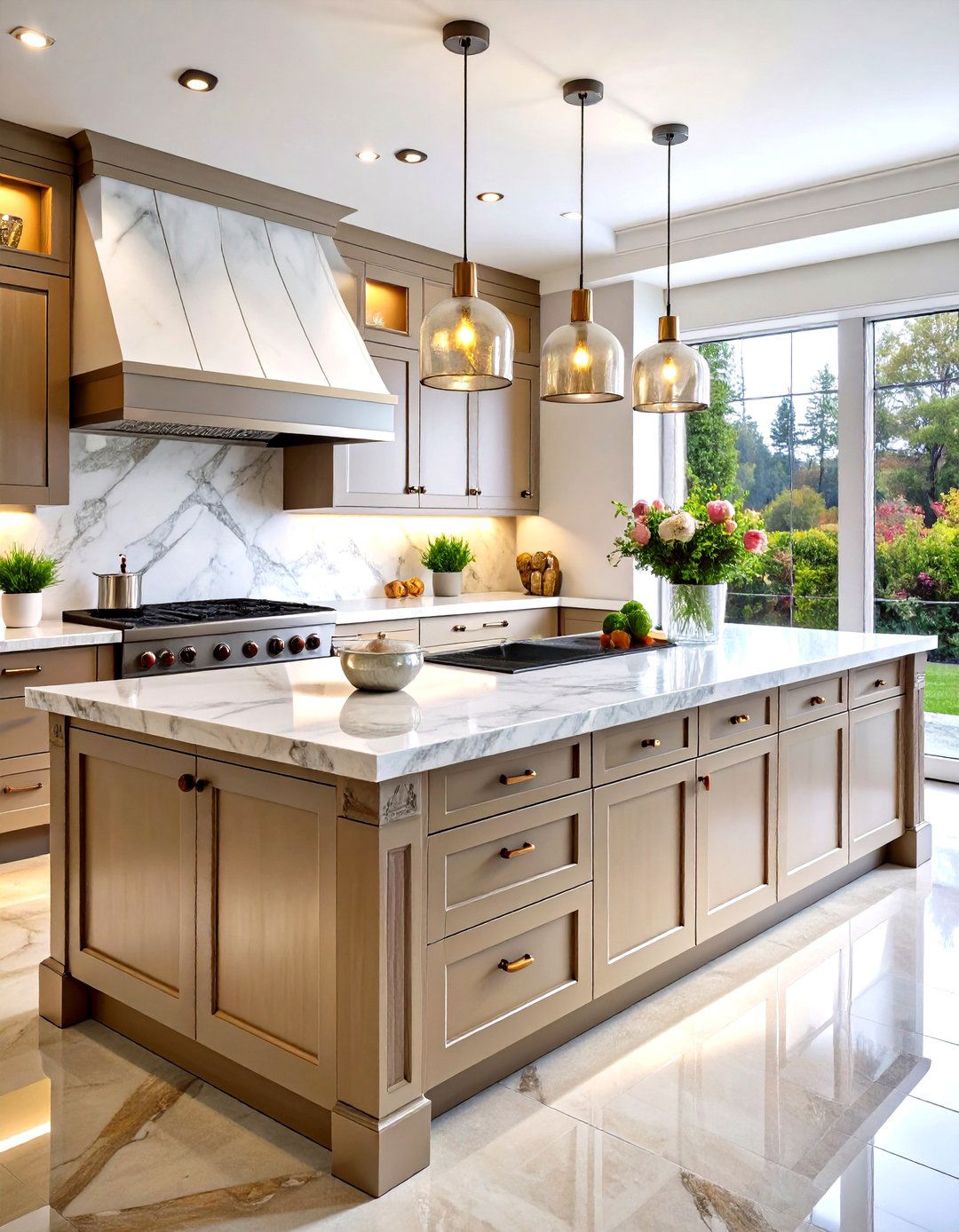

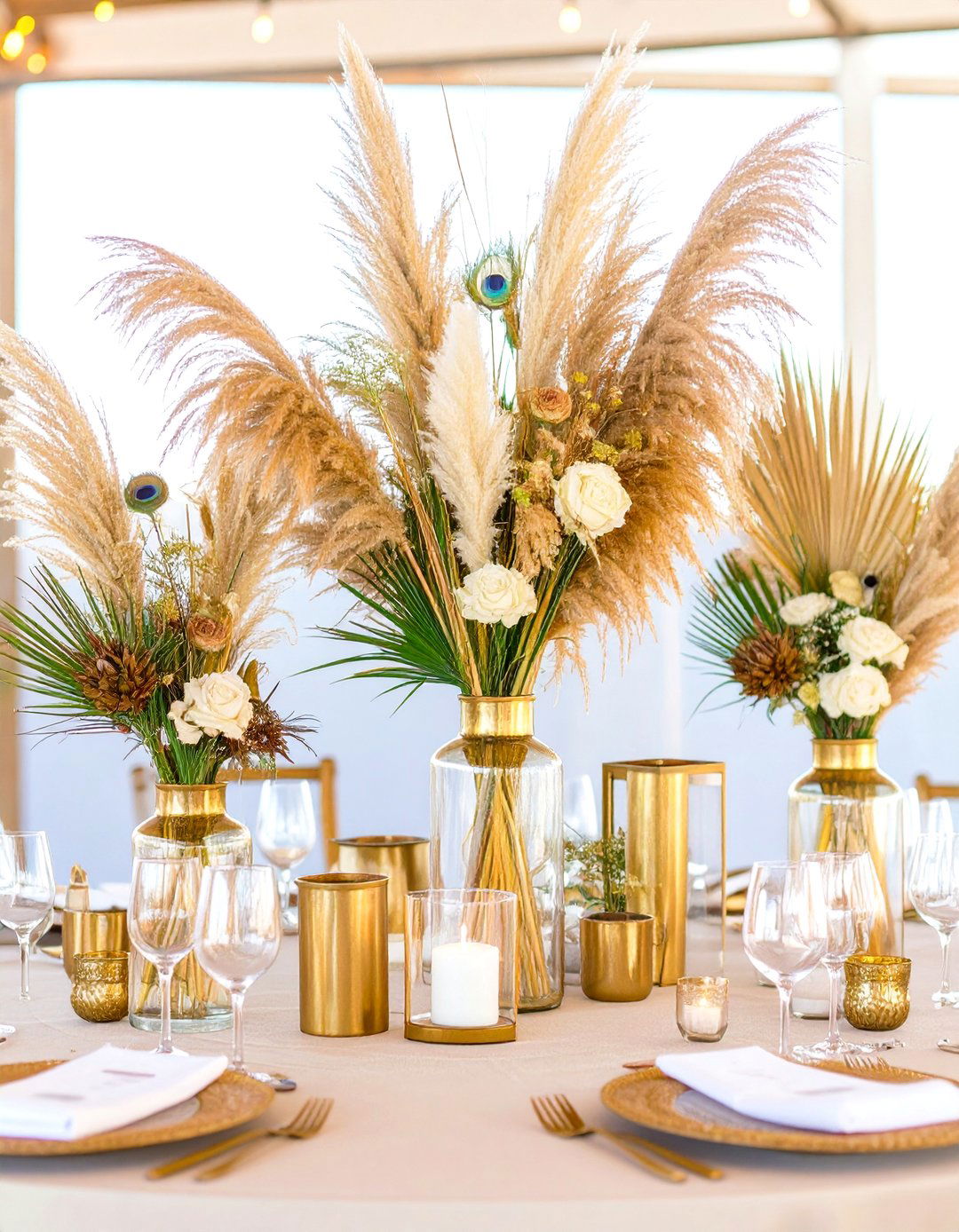
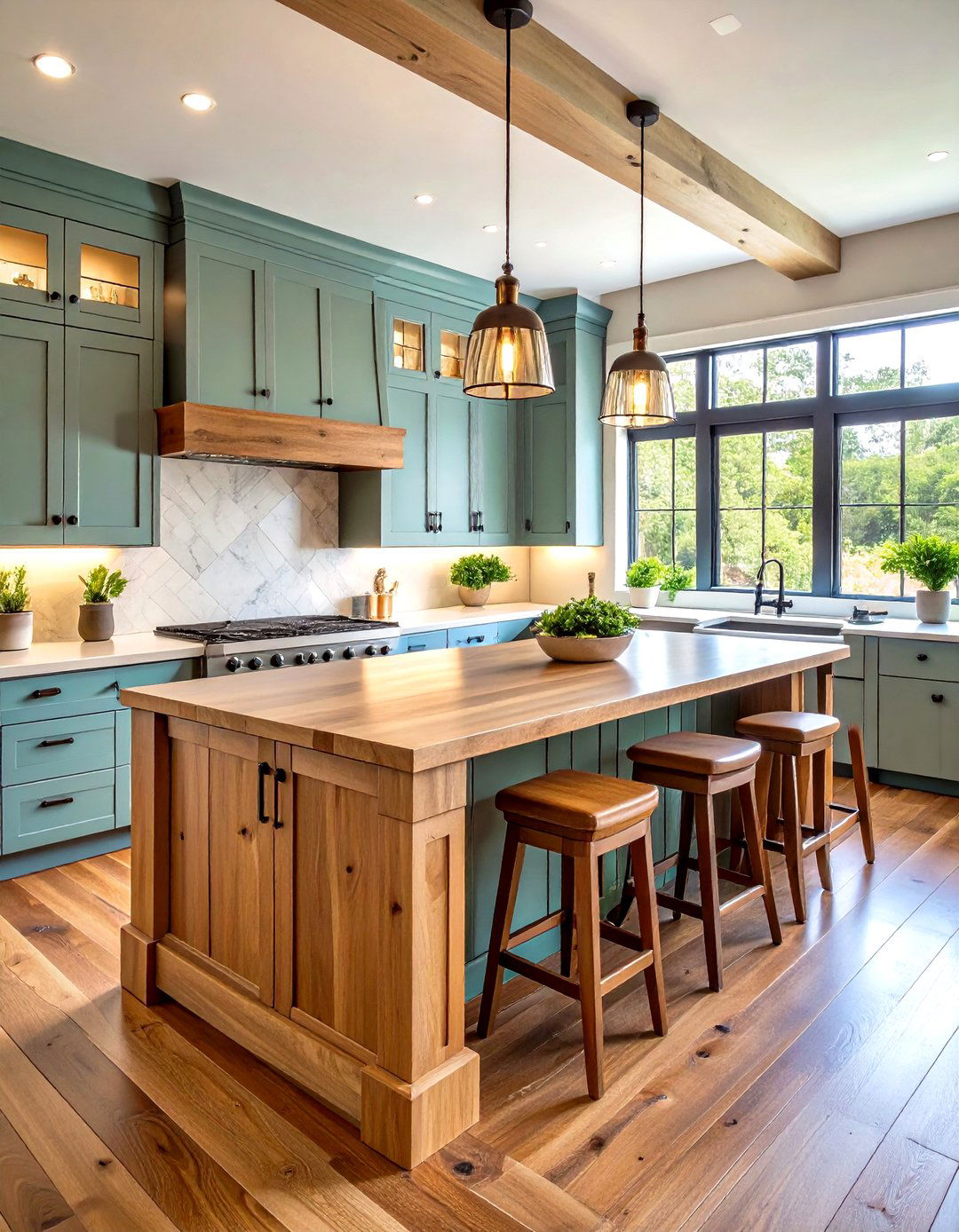

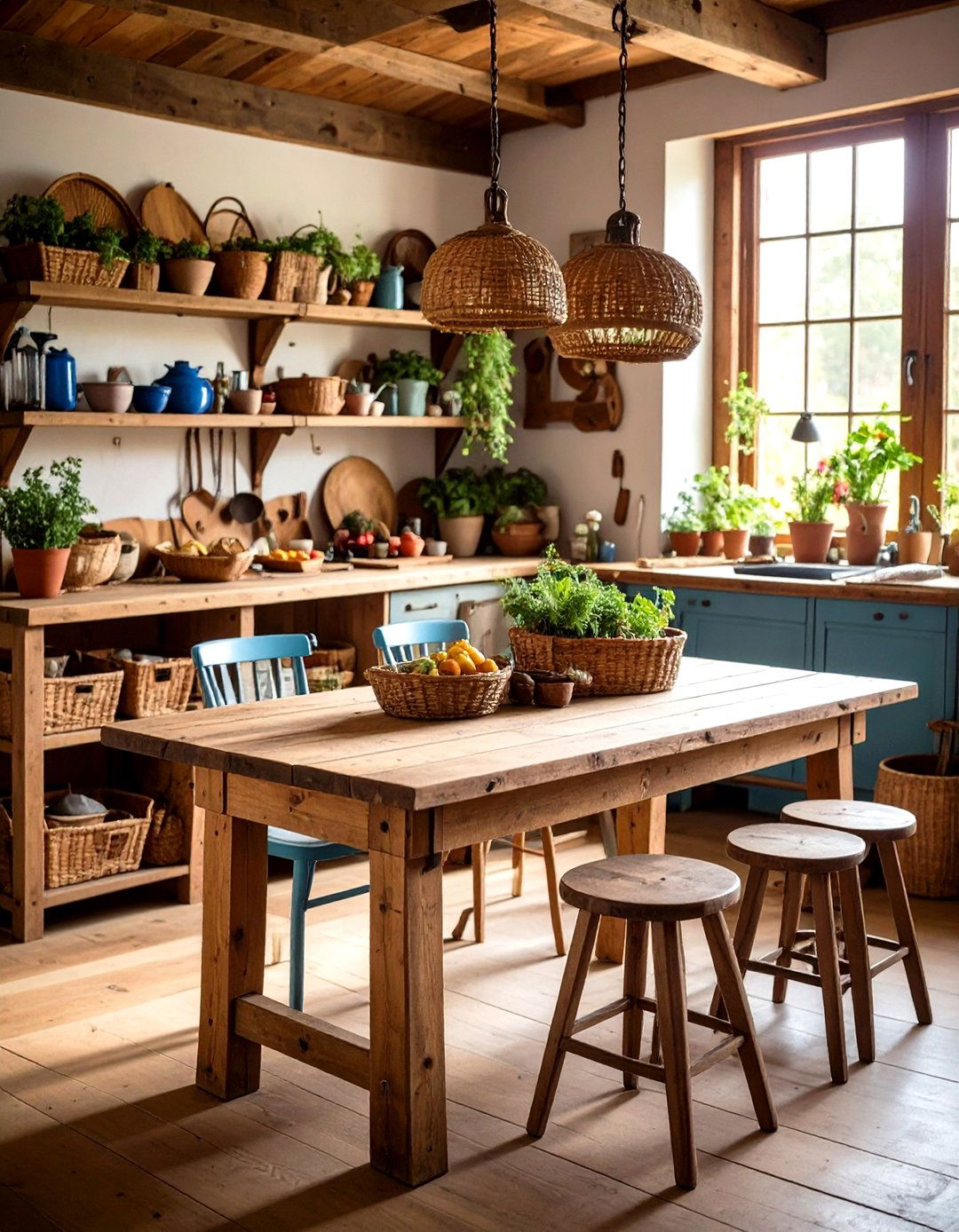
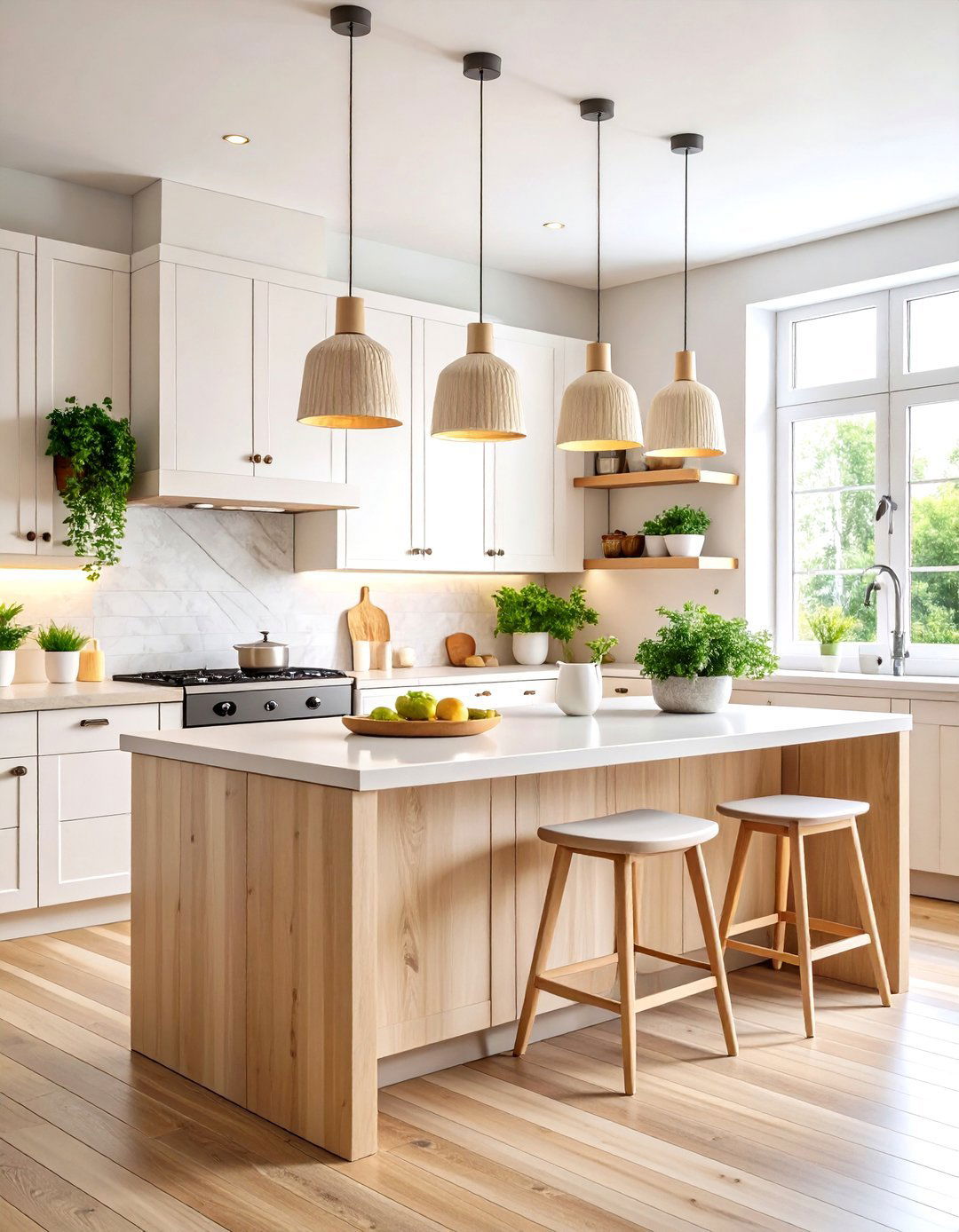
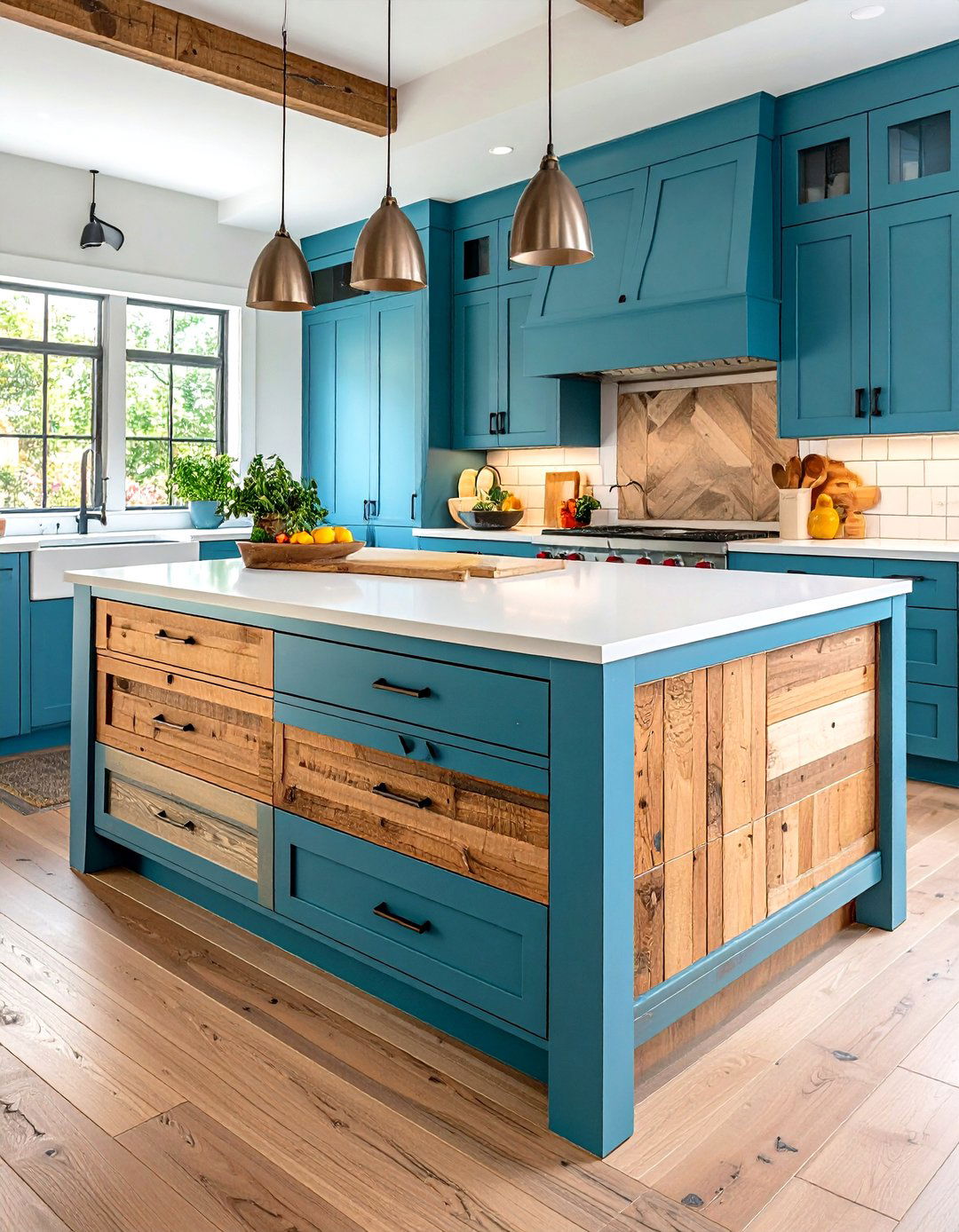
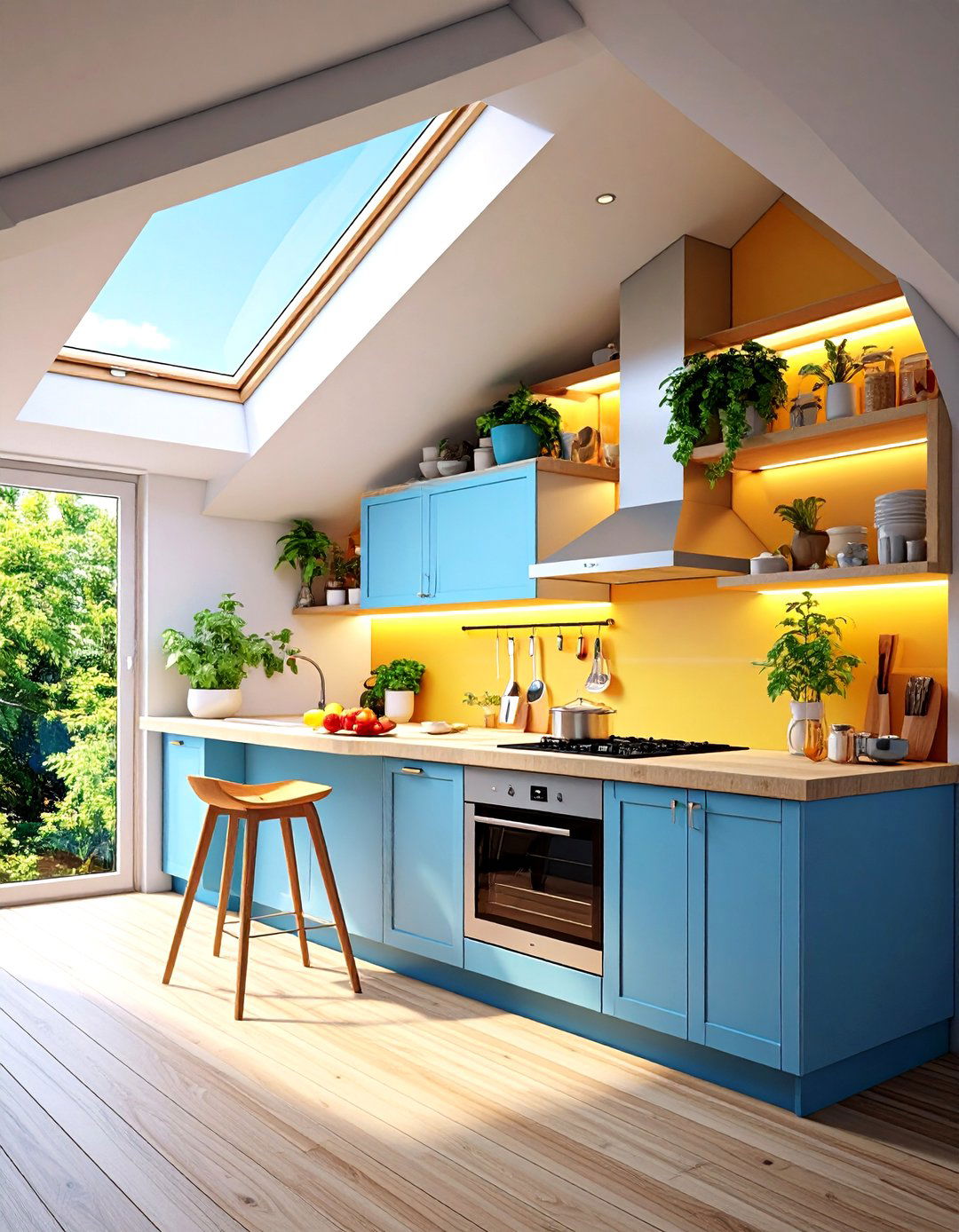

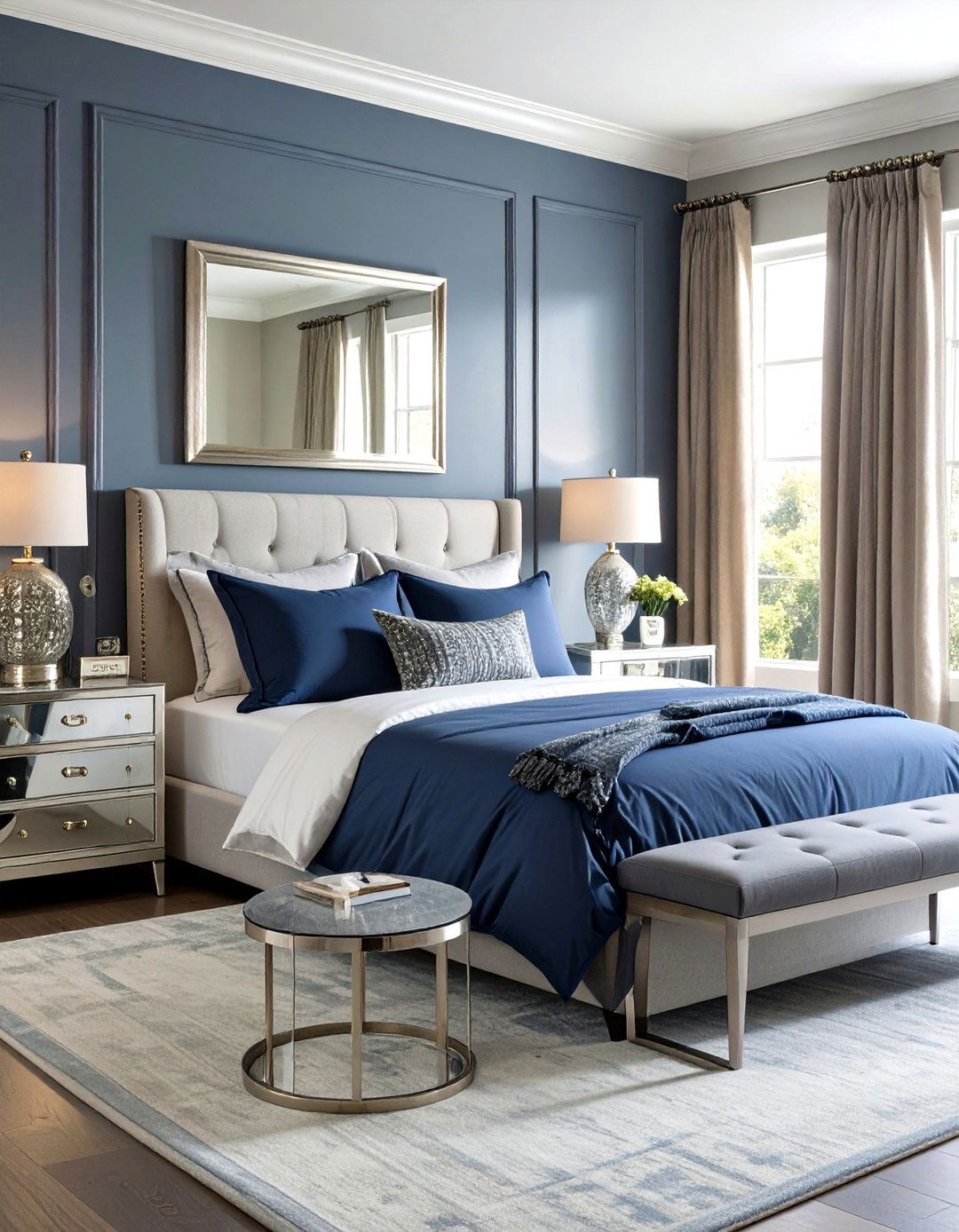
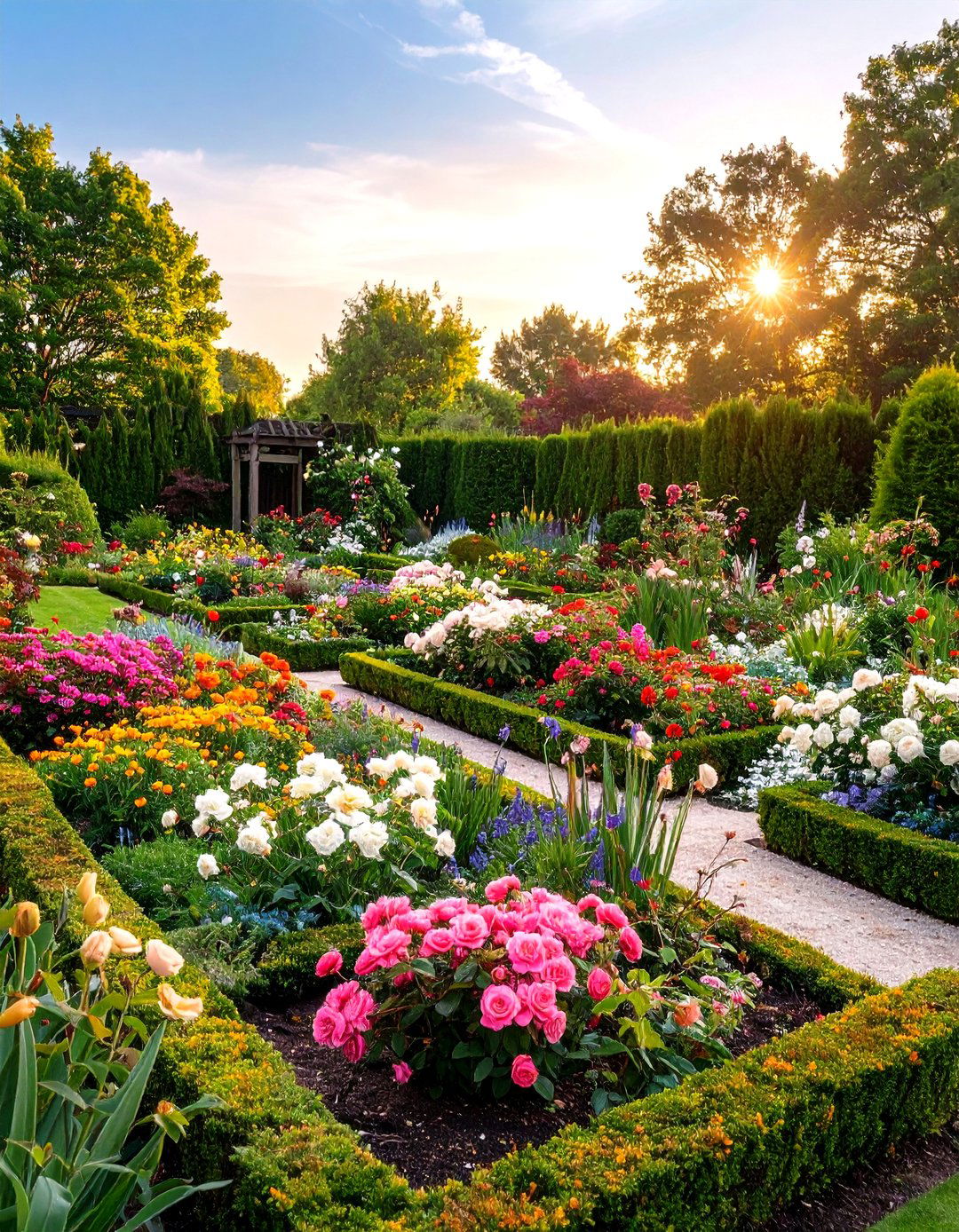
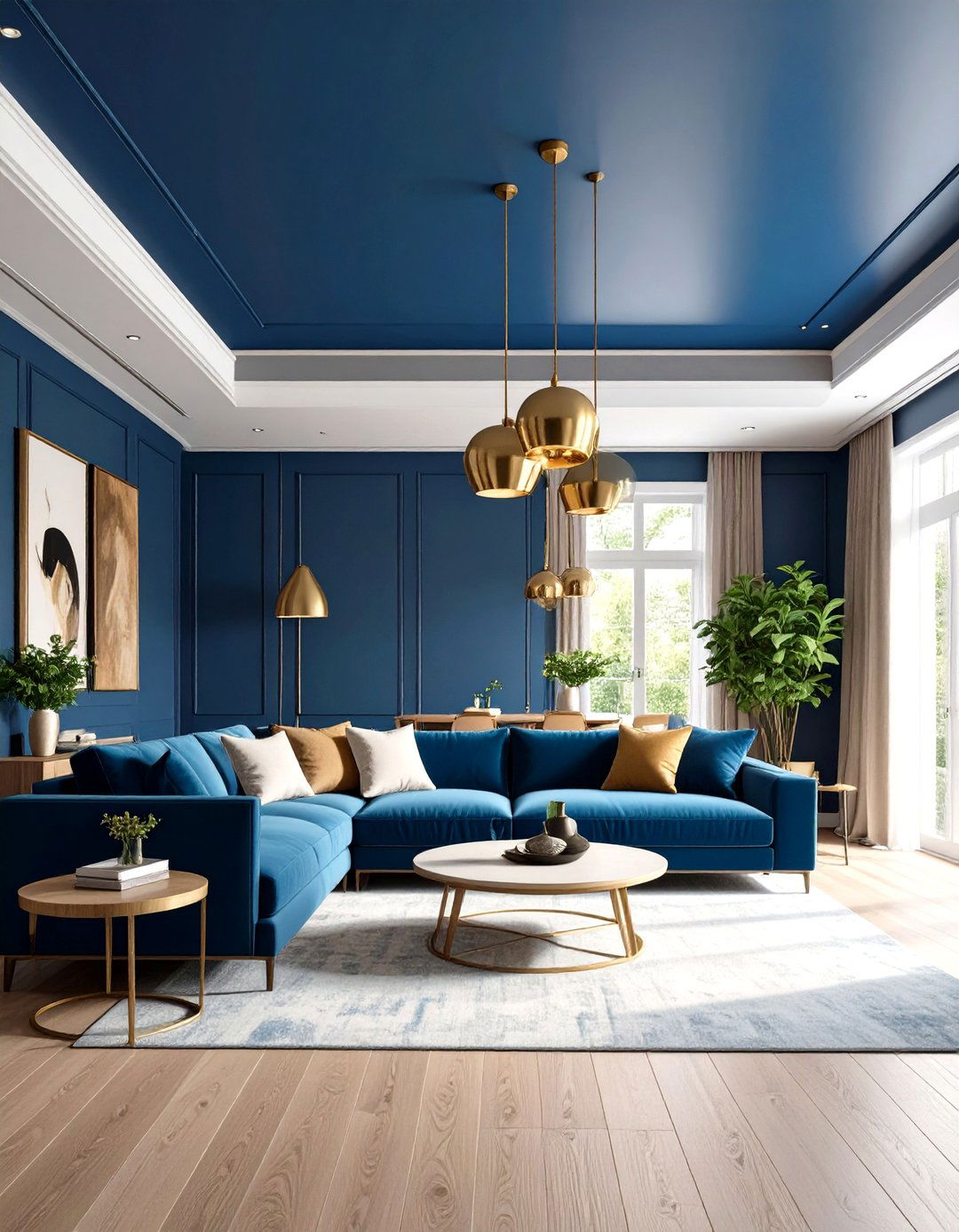
Leave a Reply